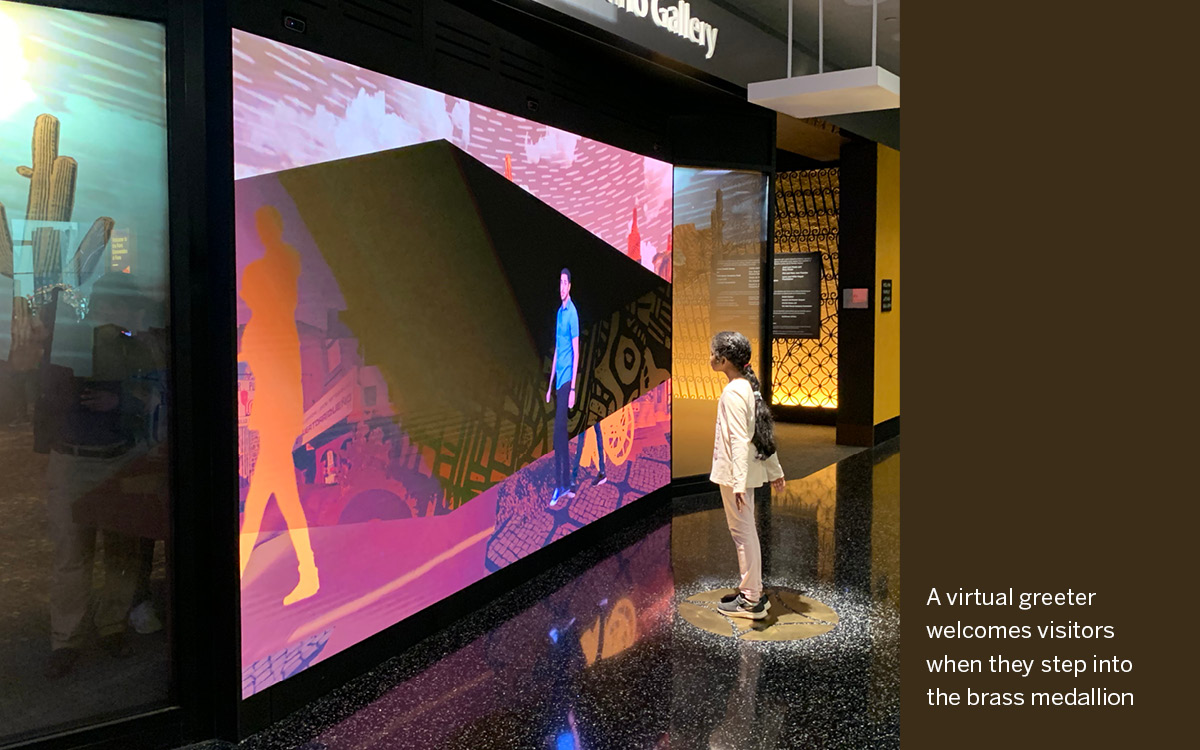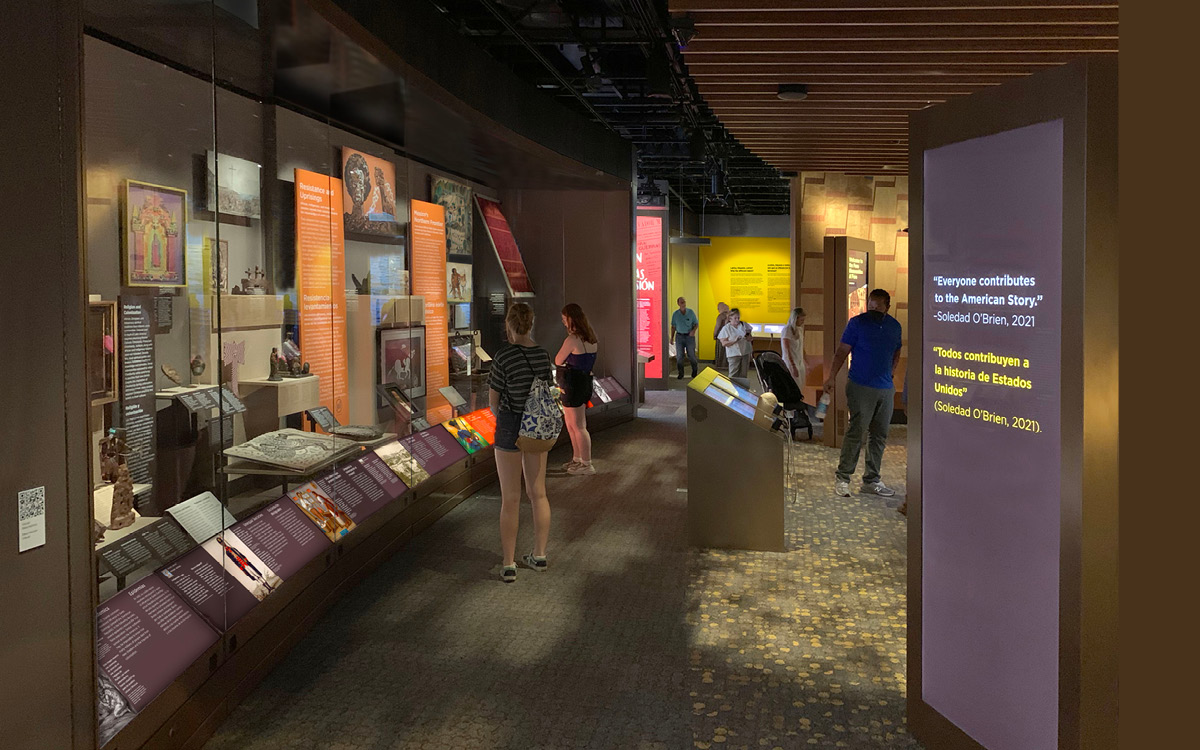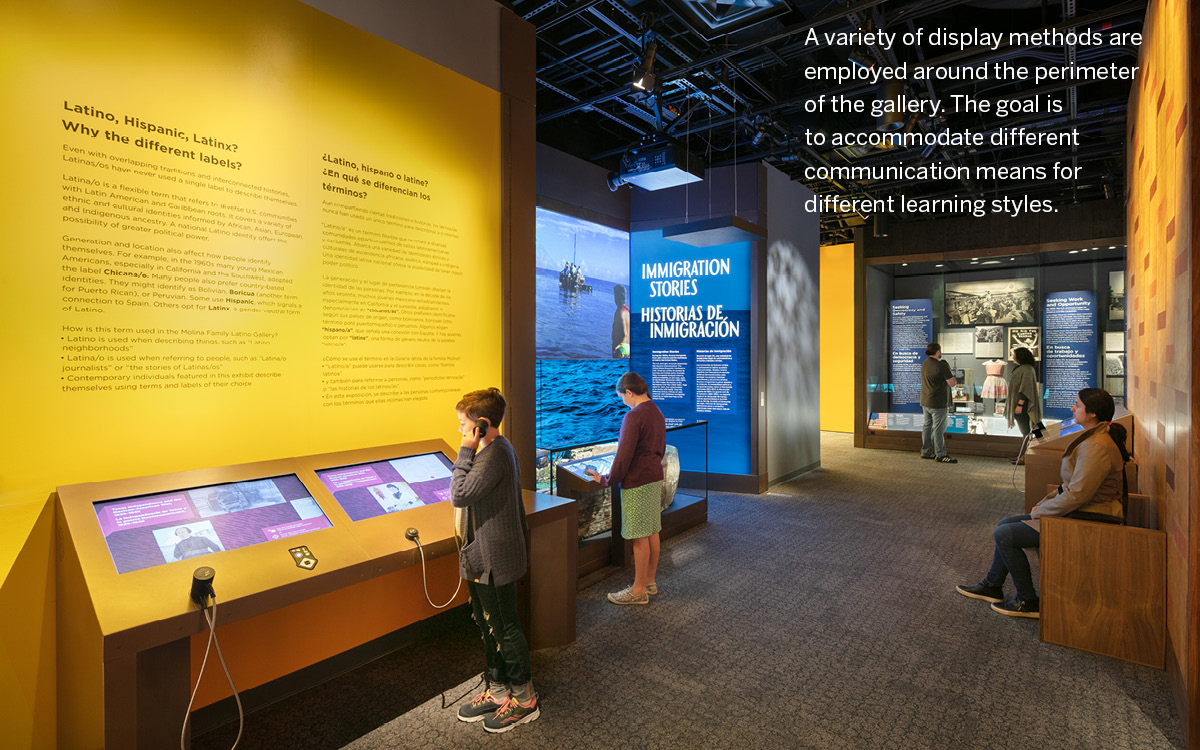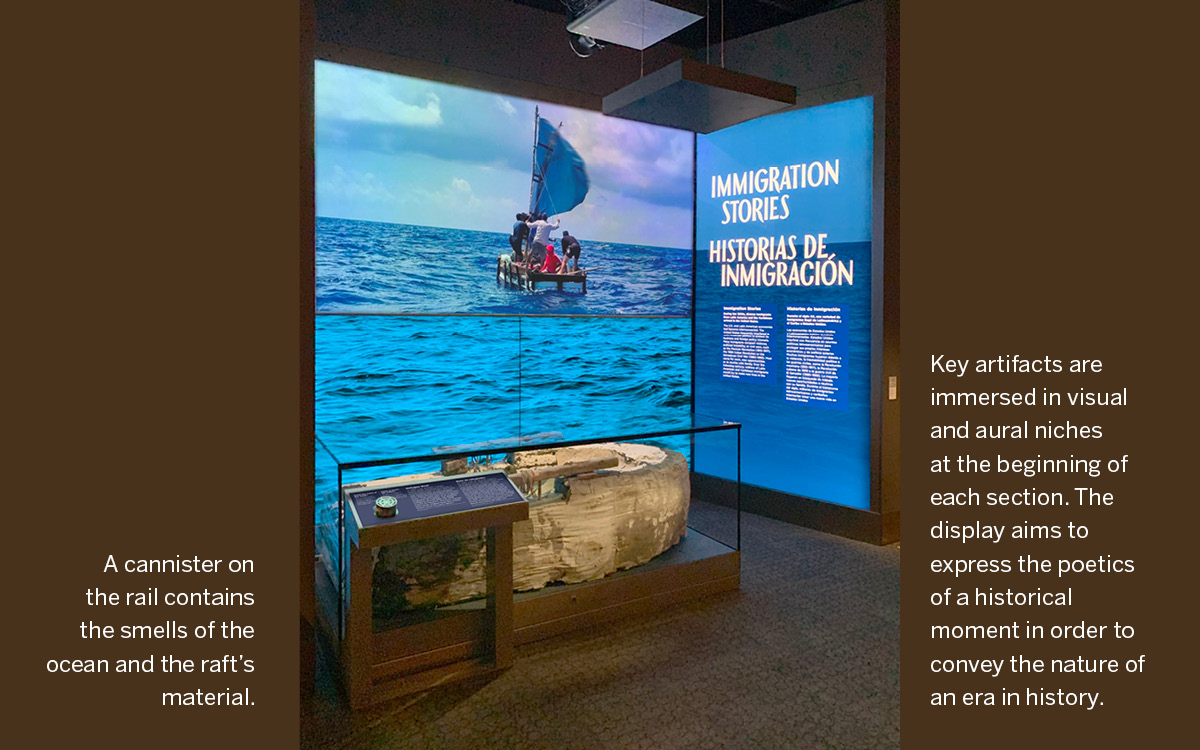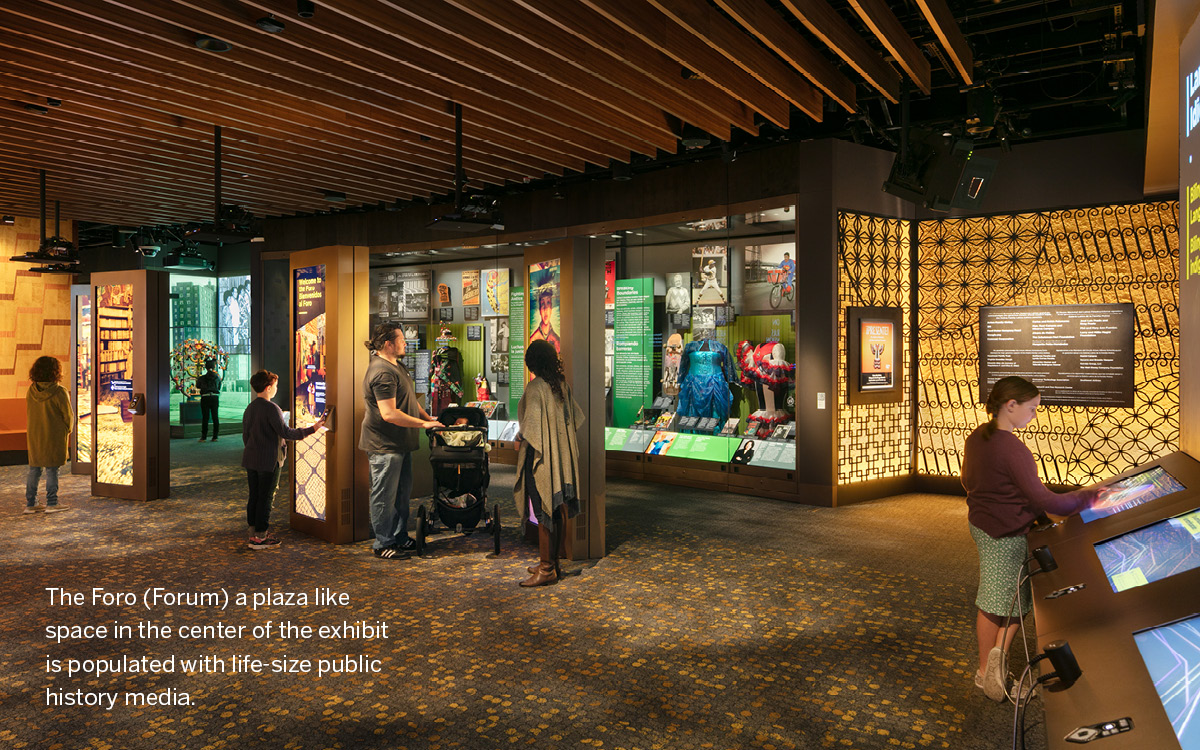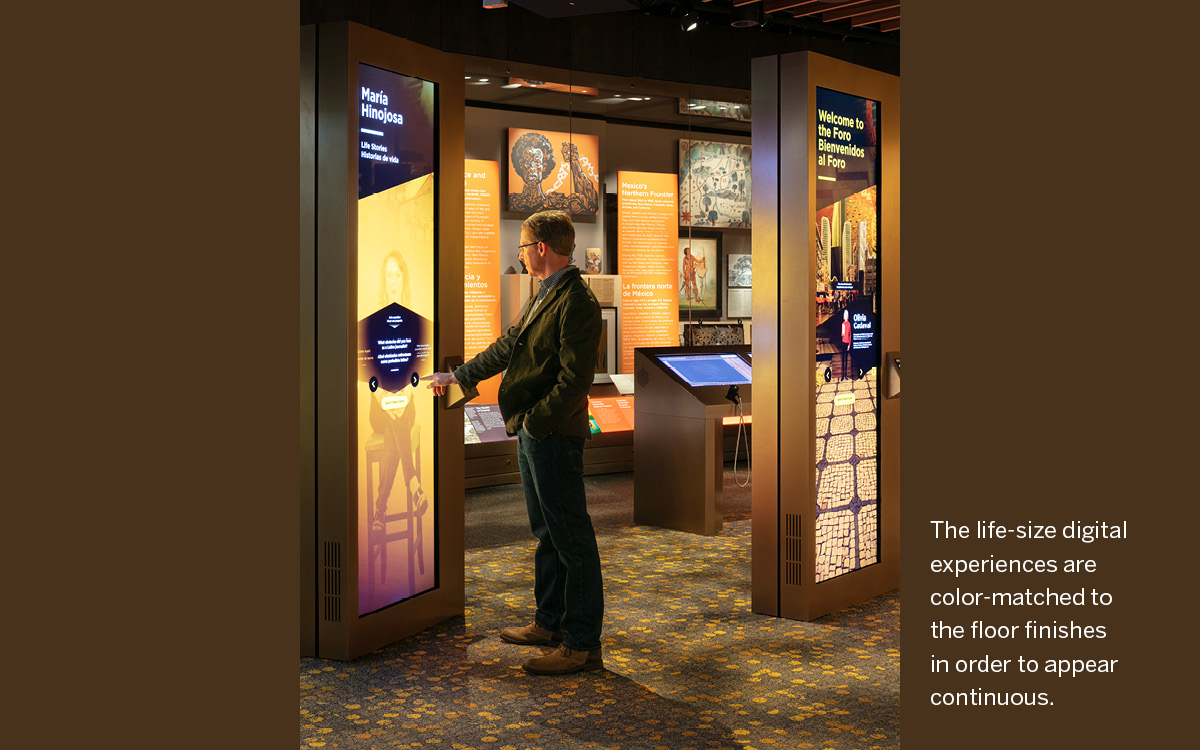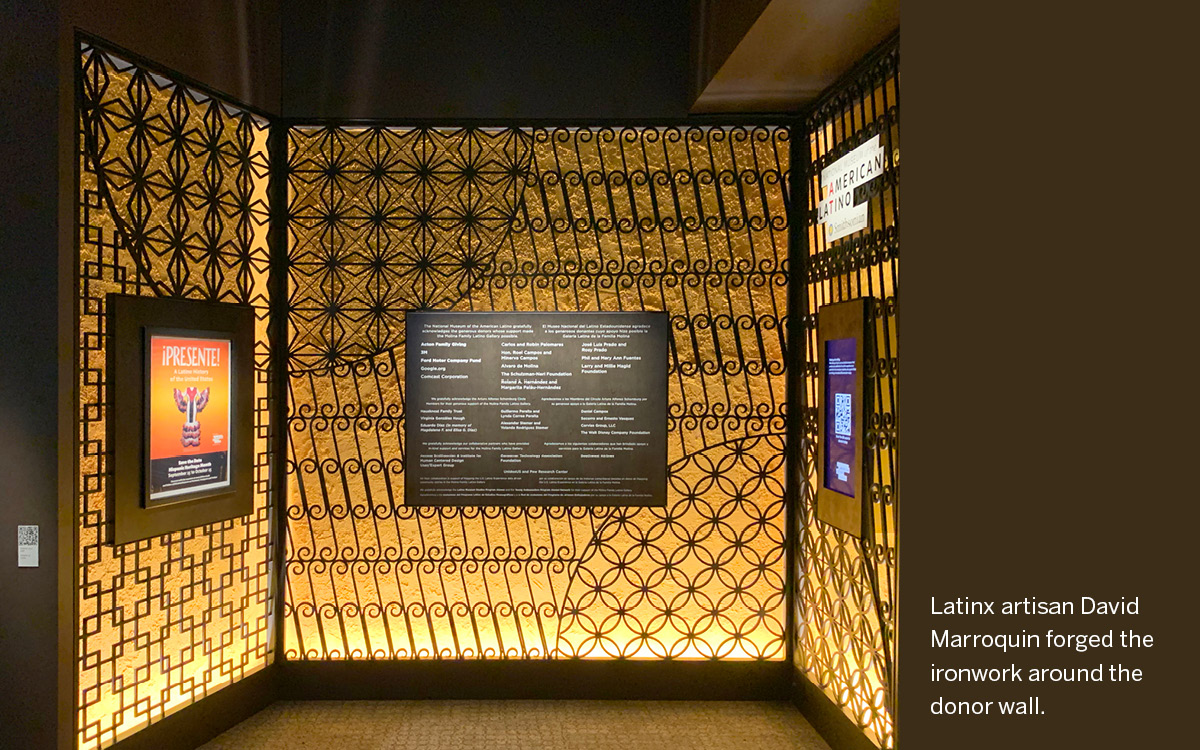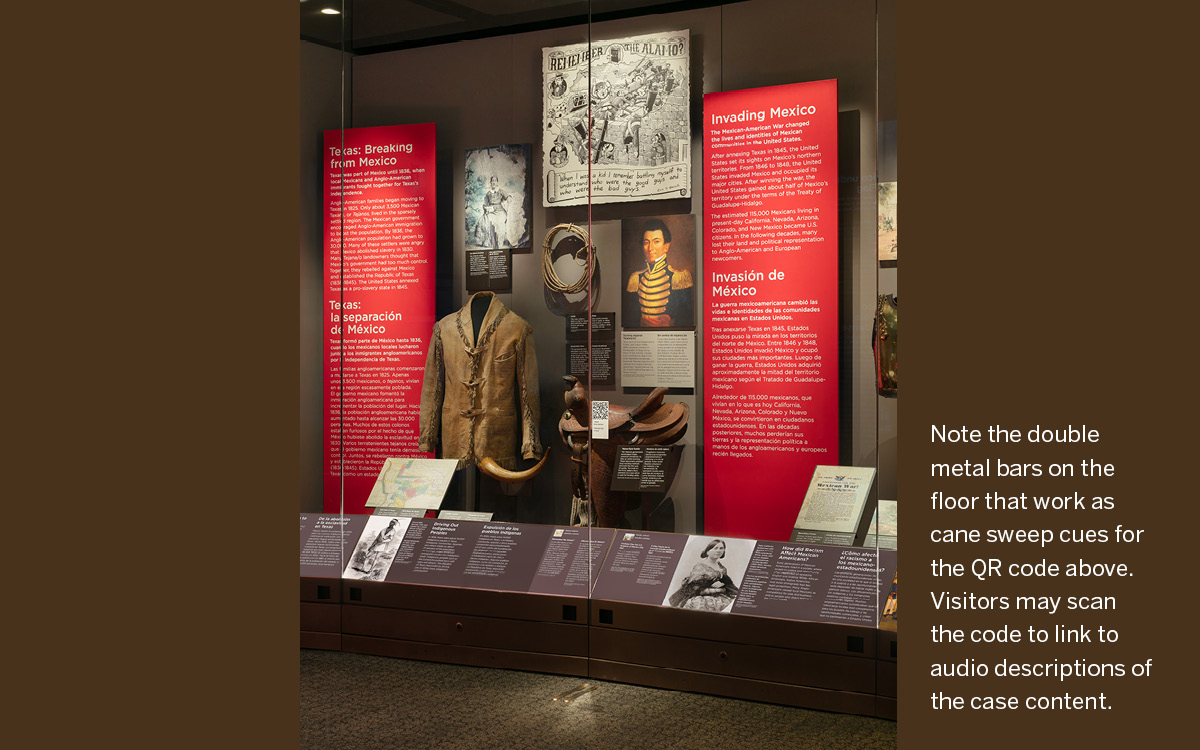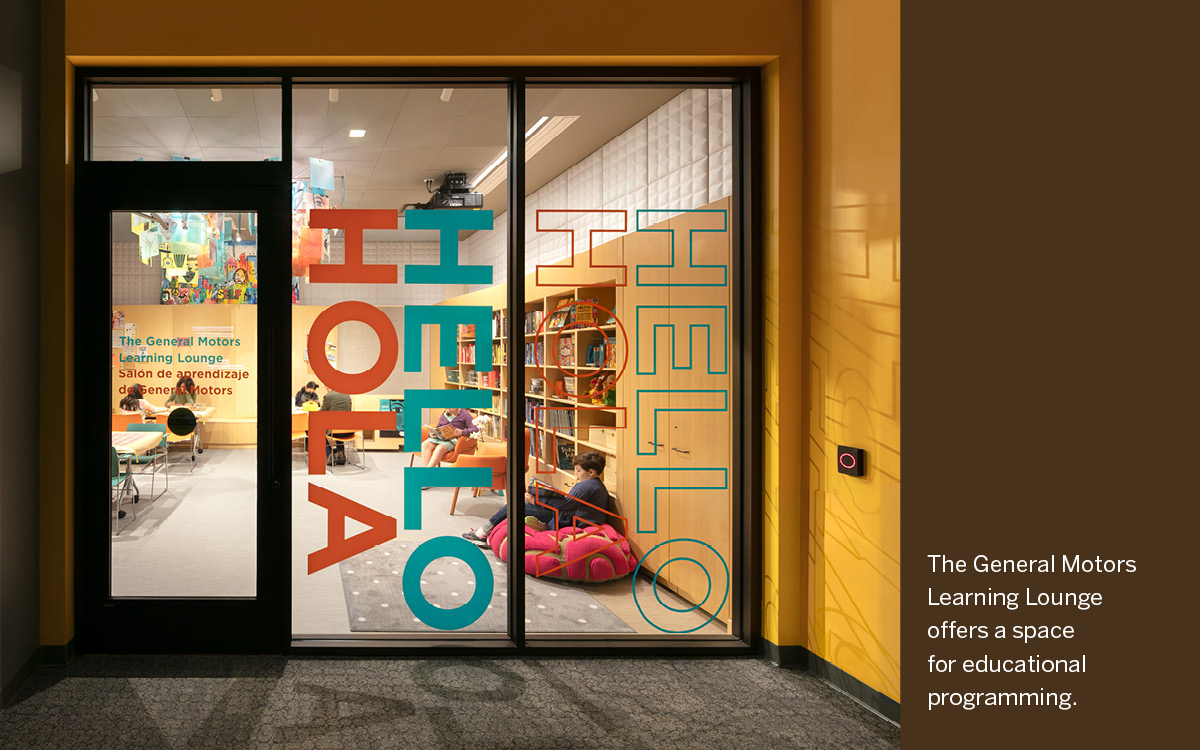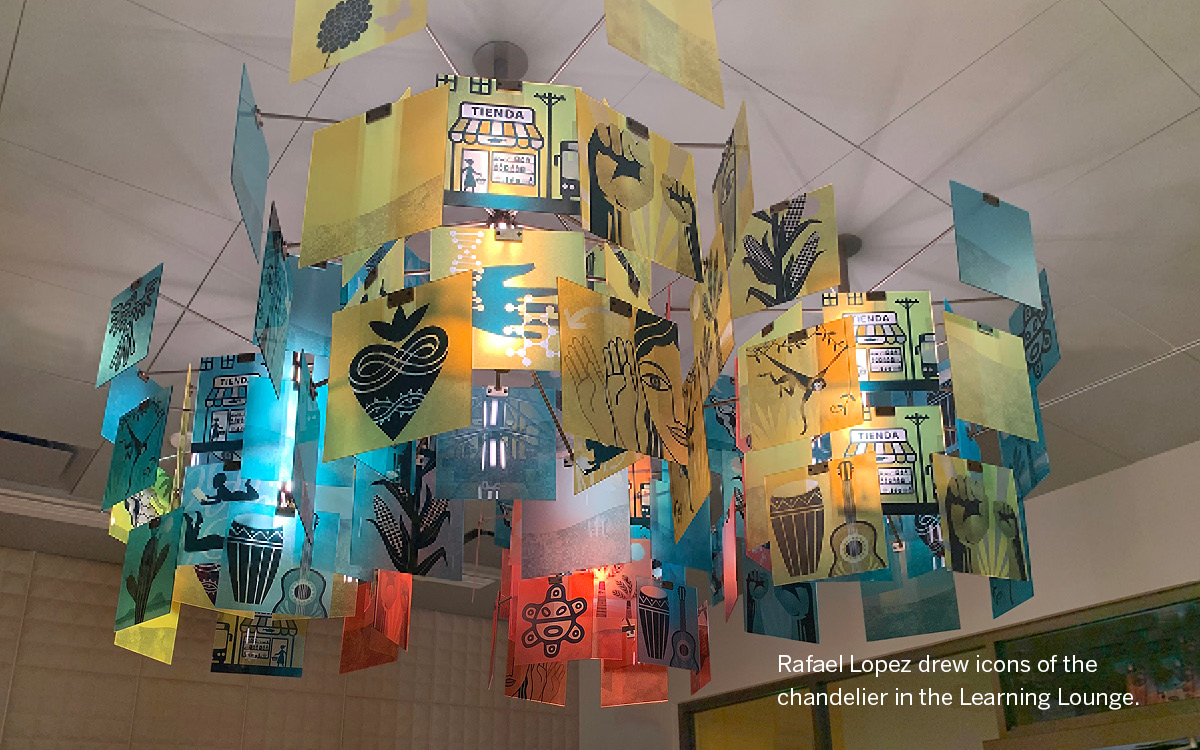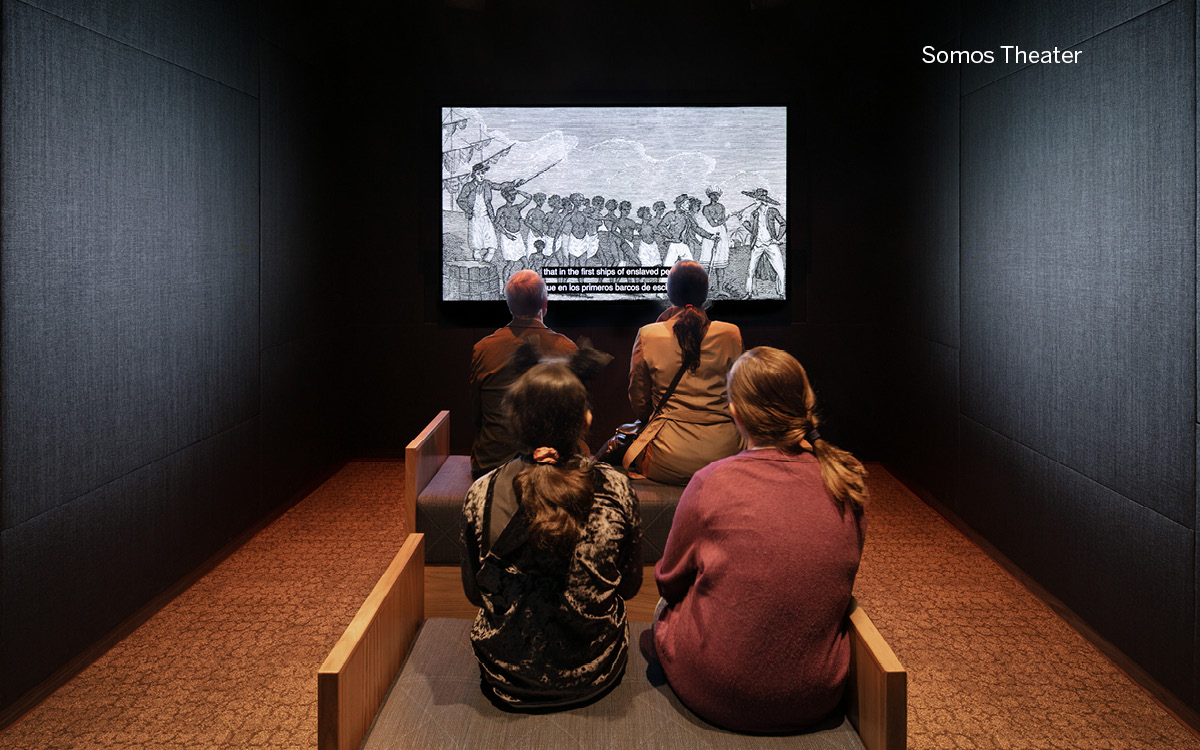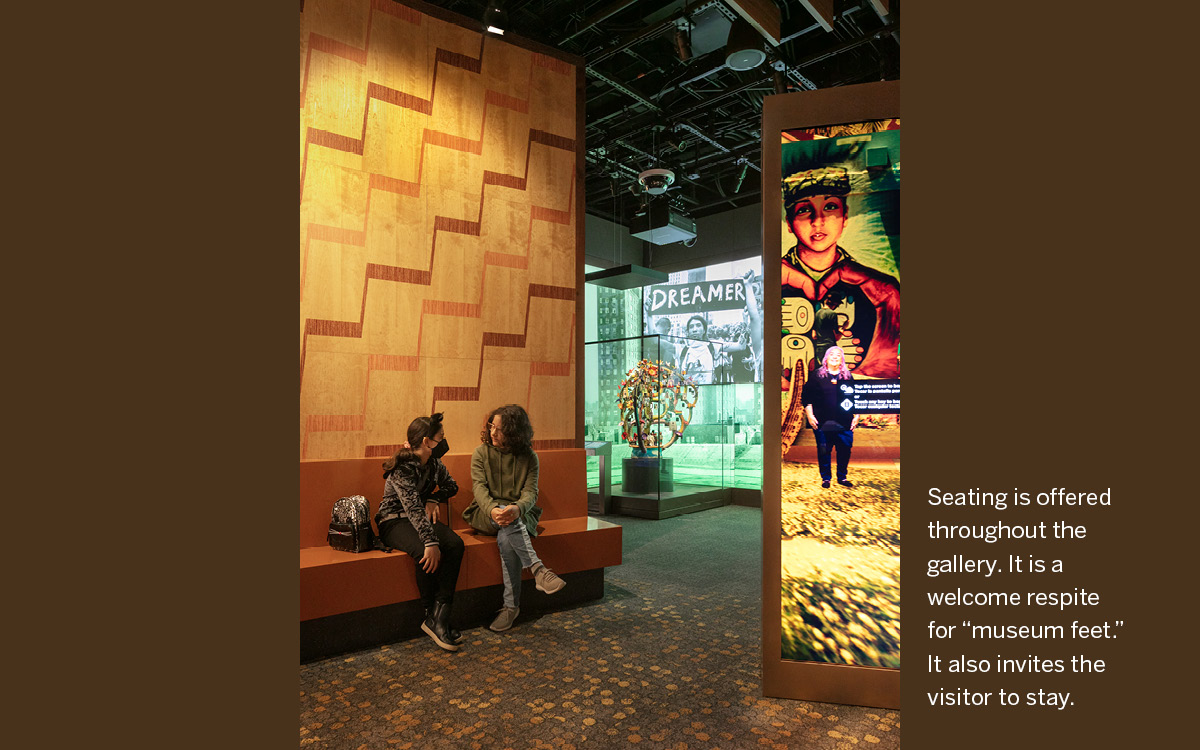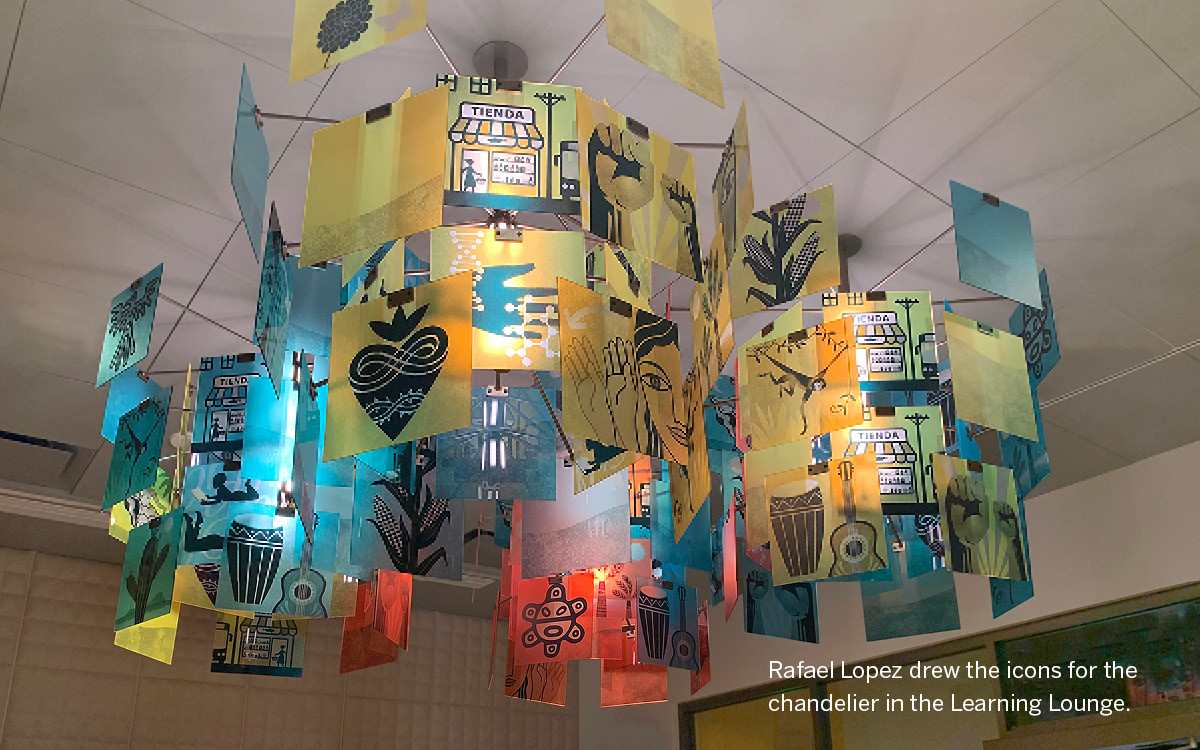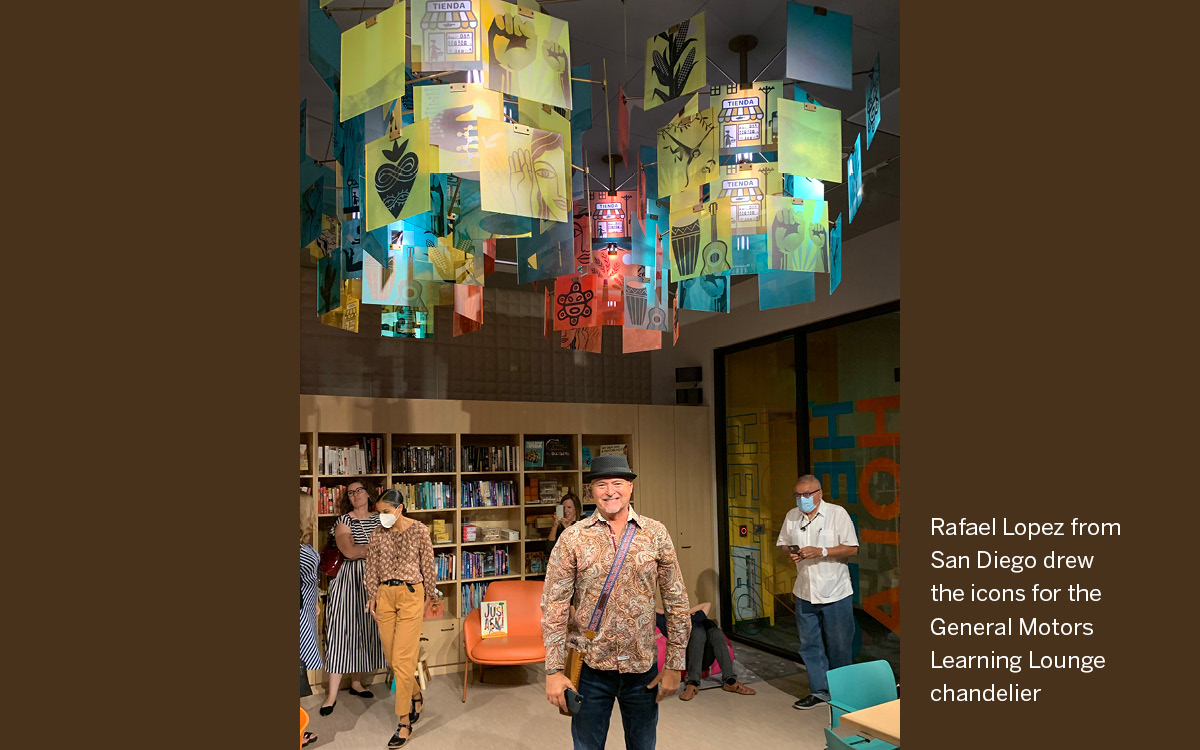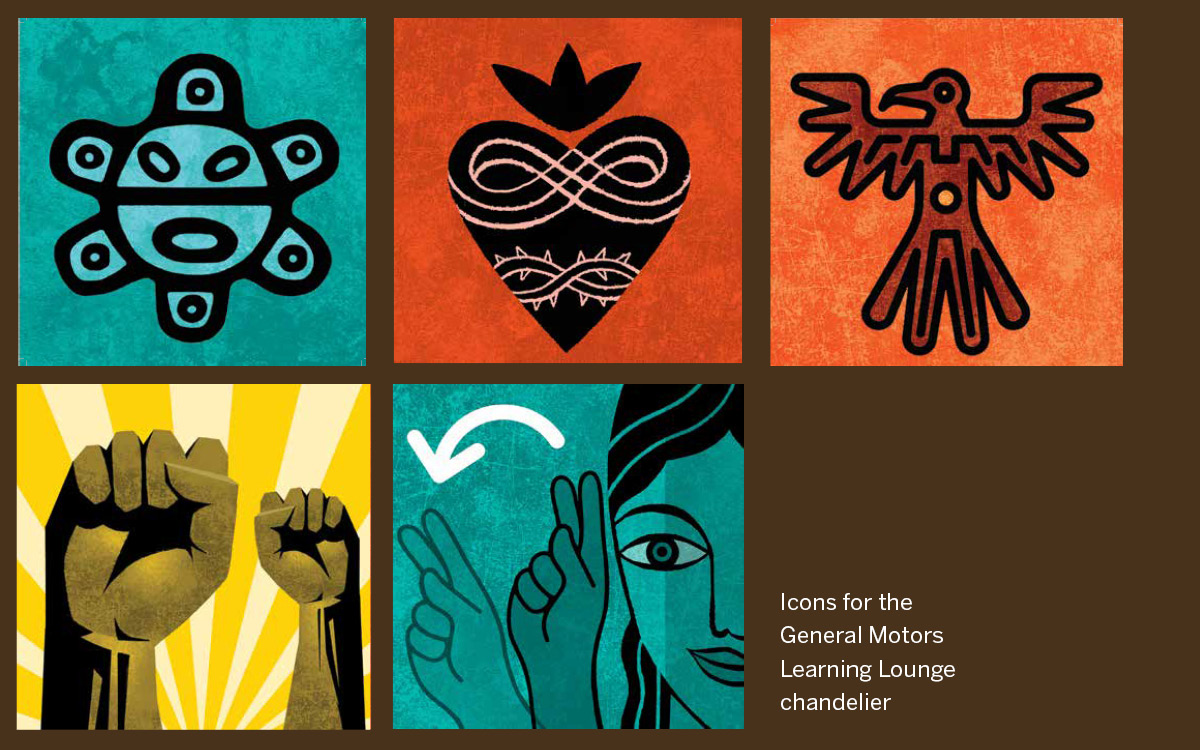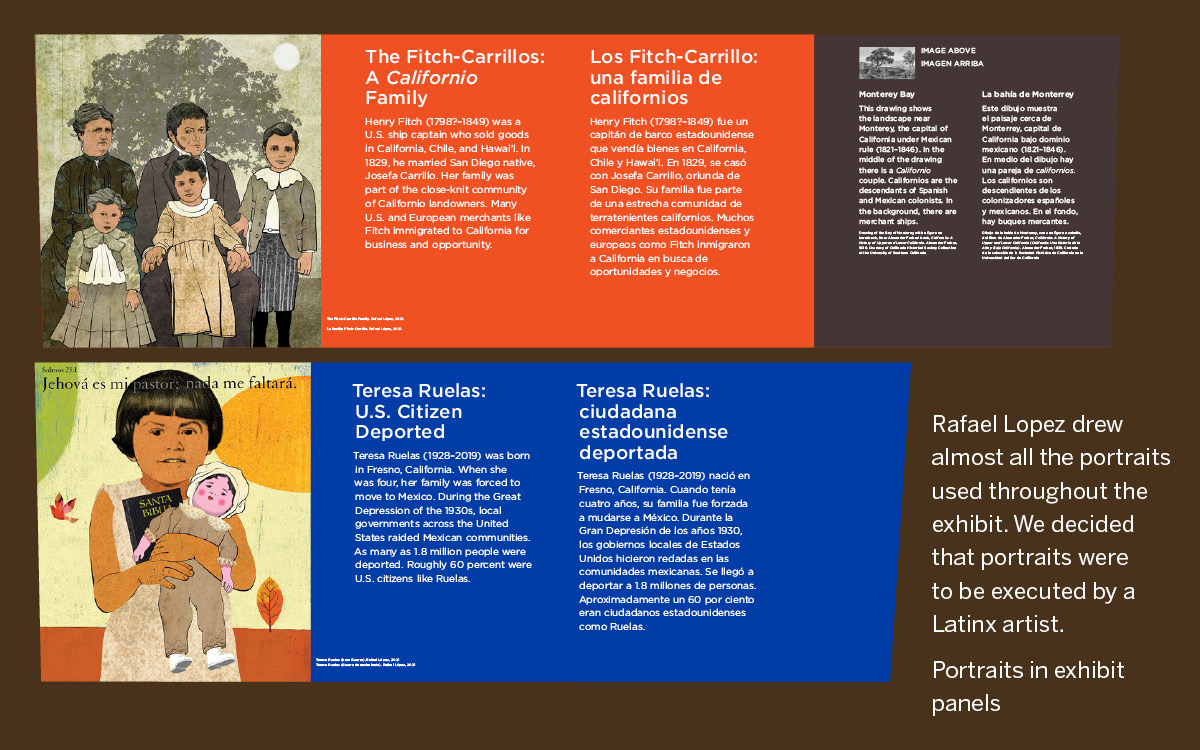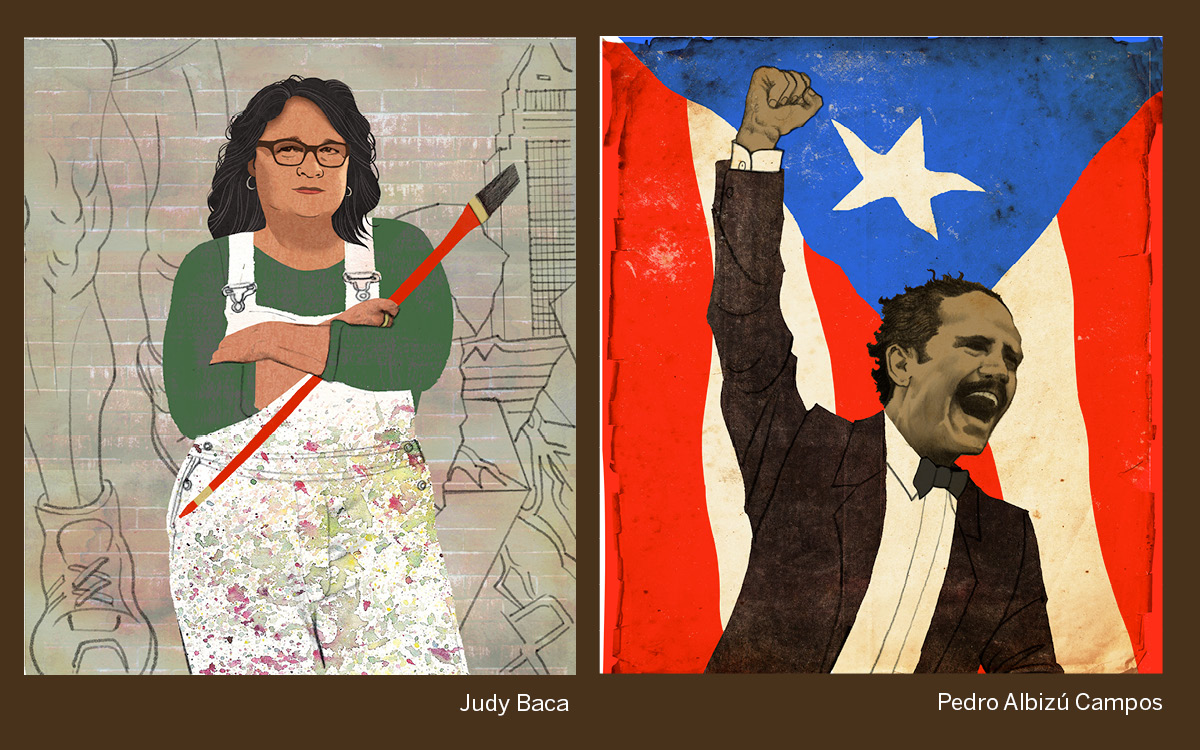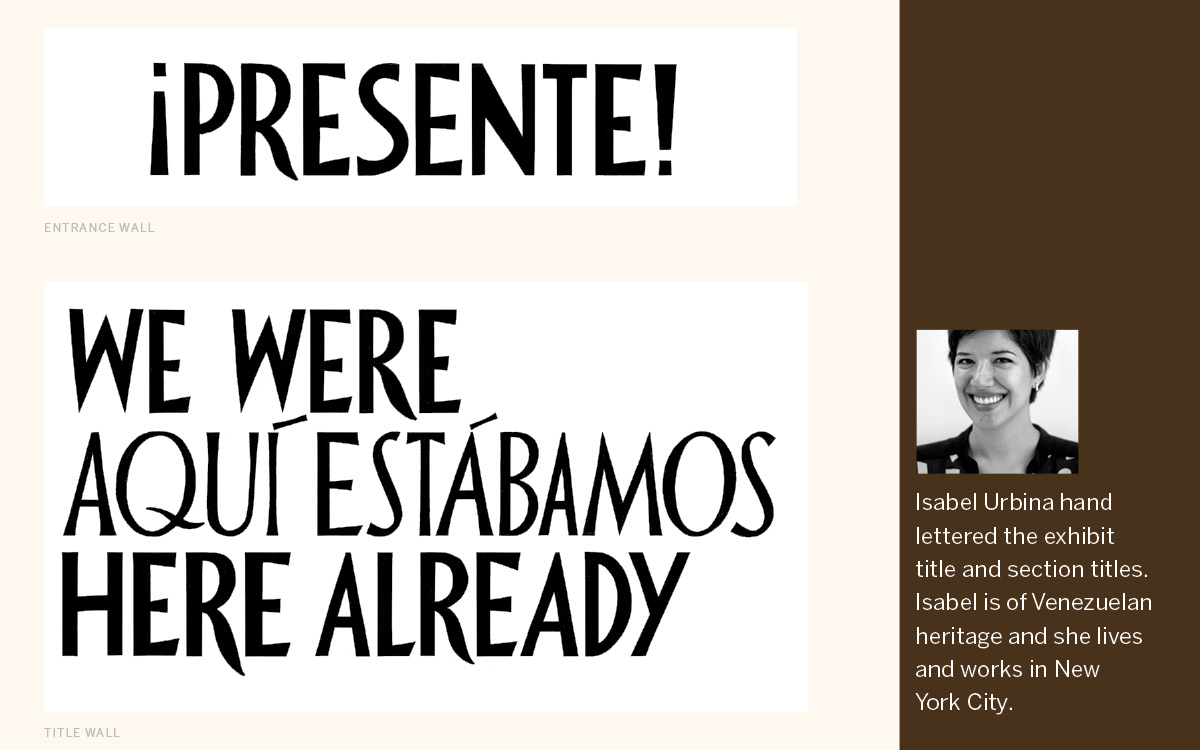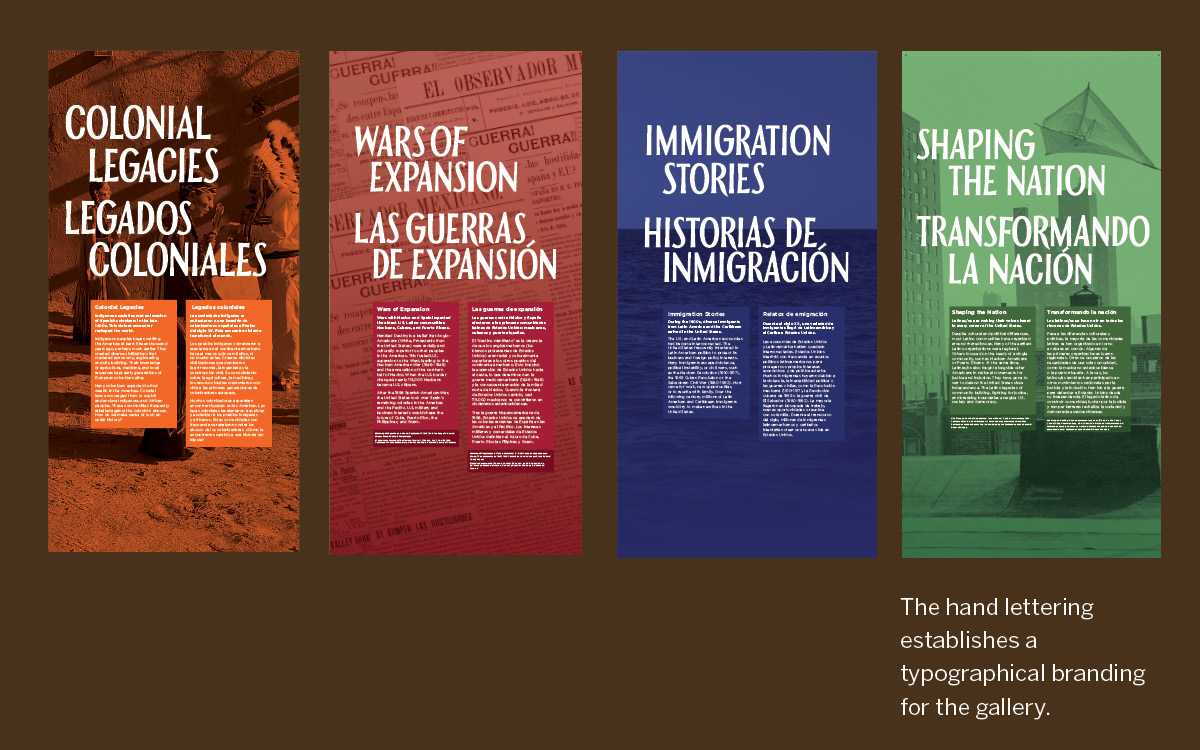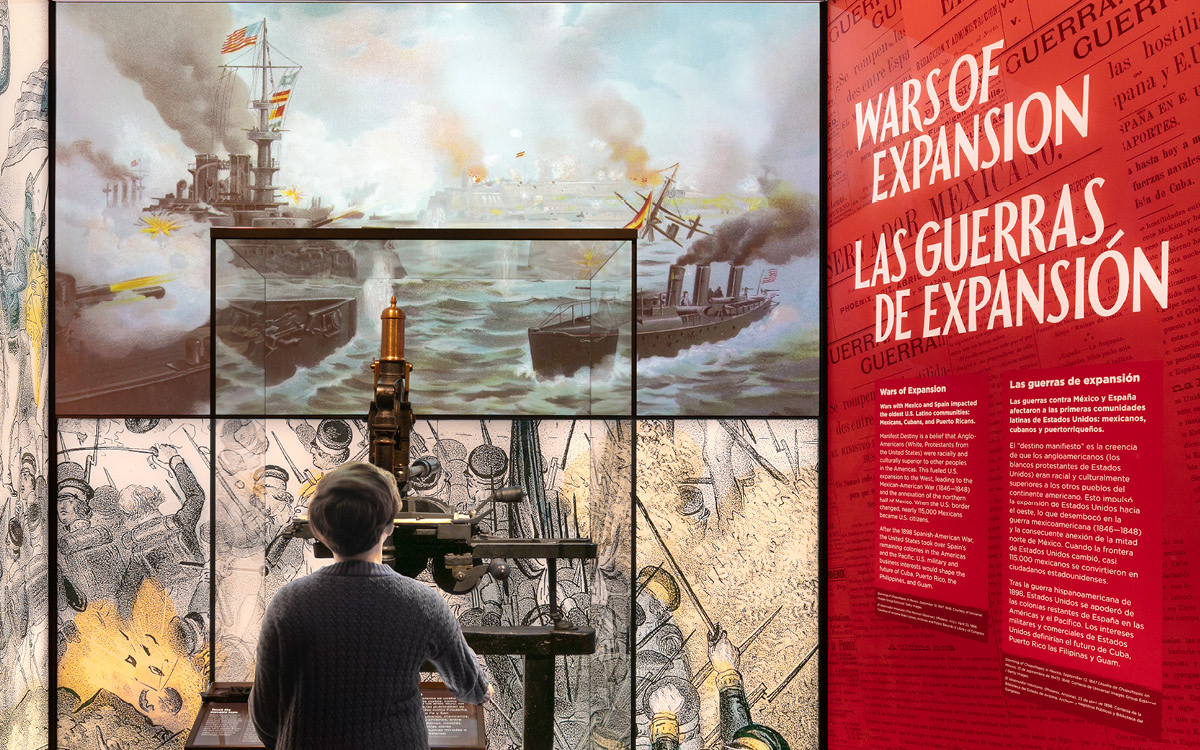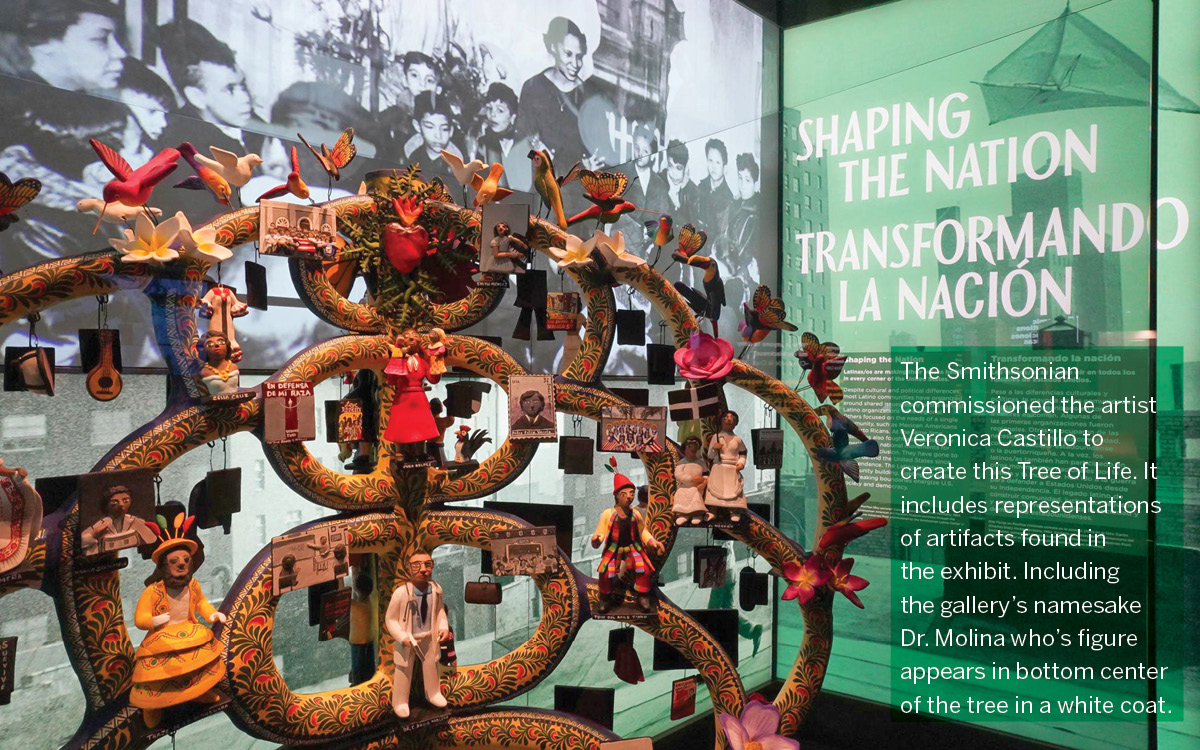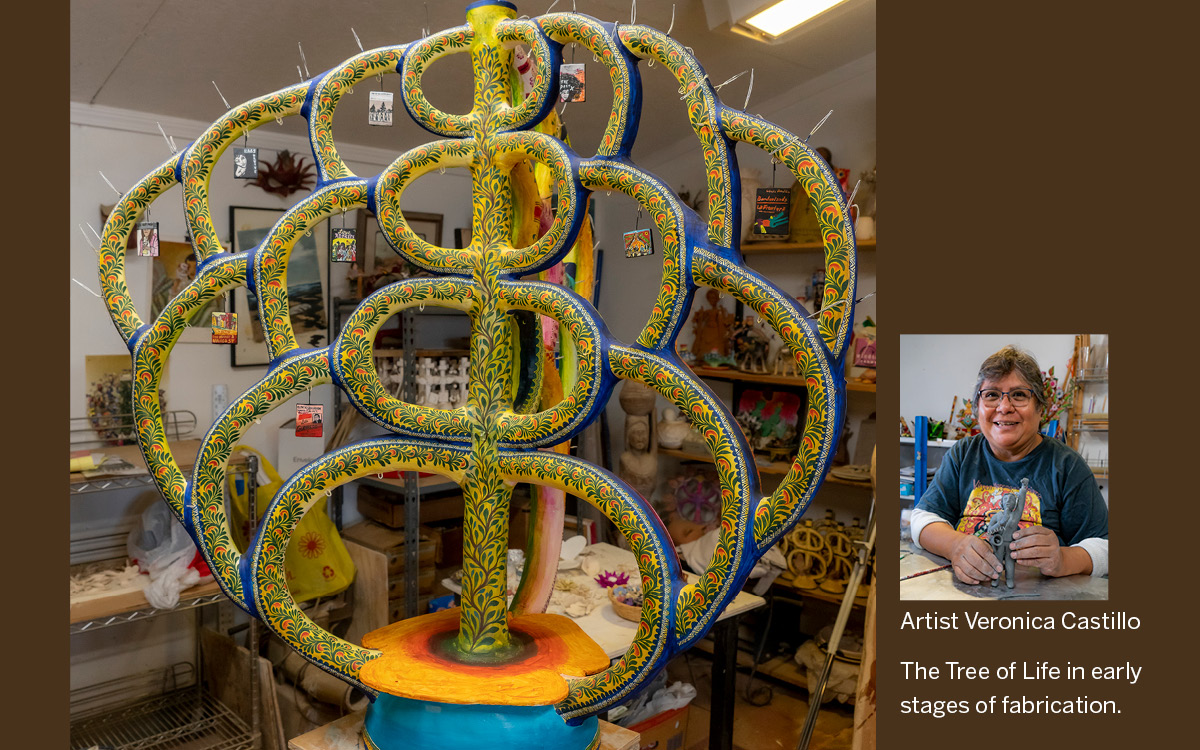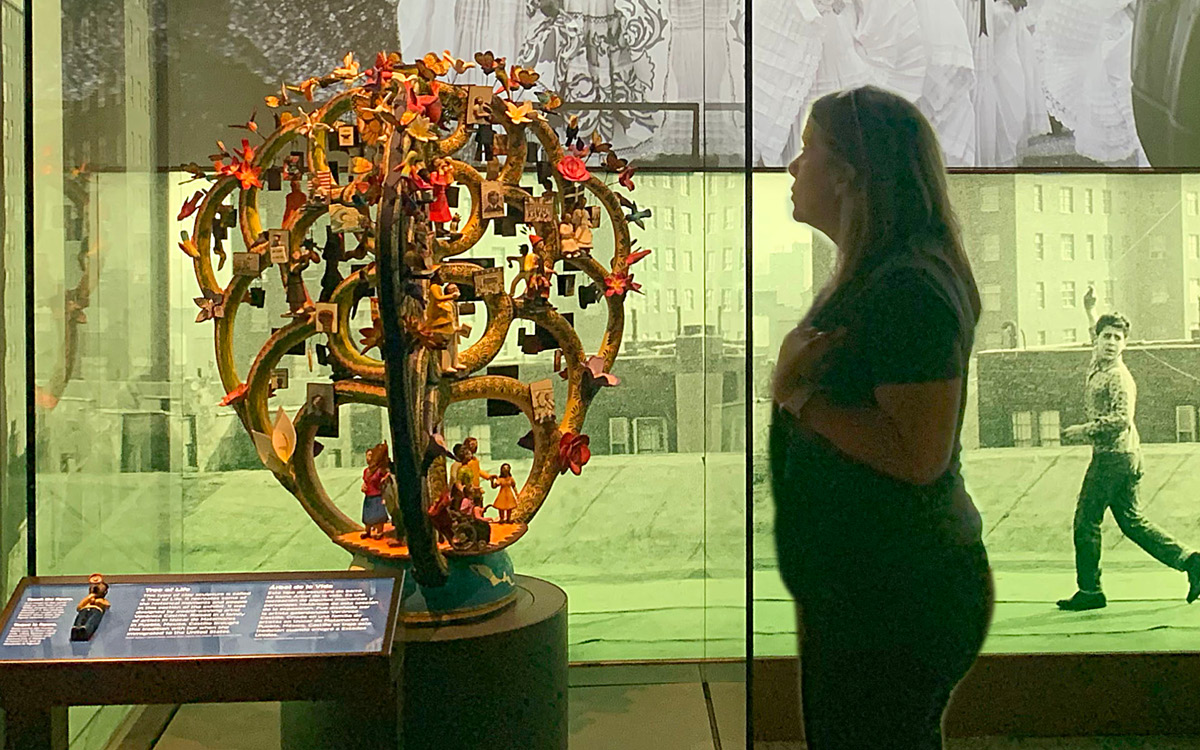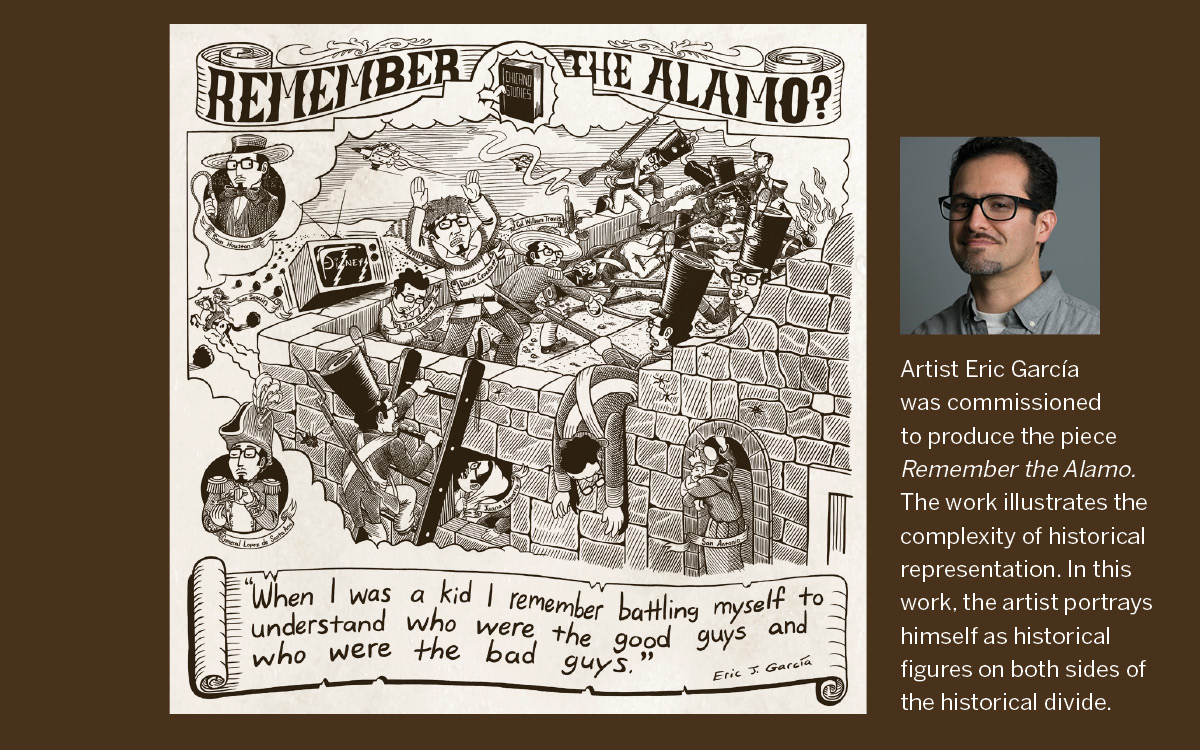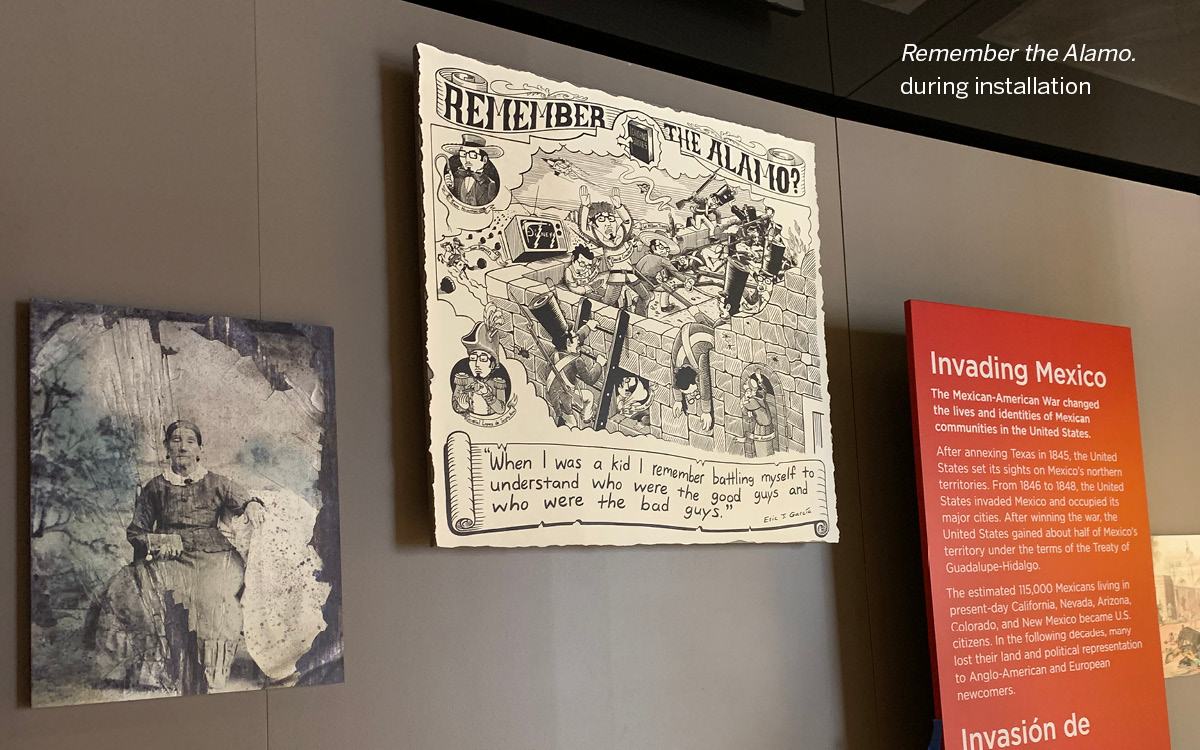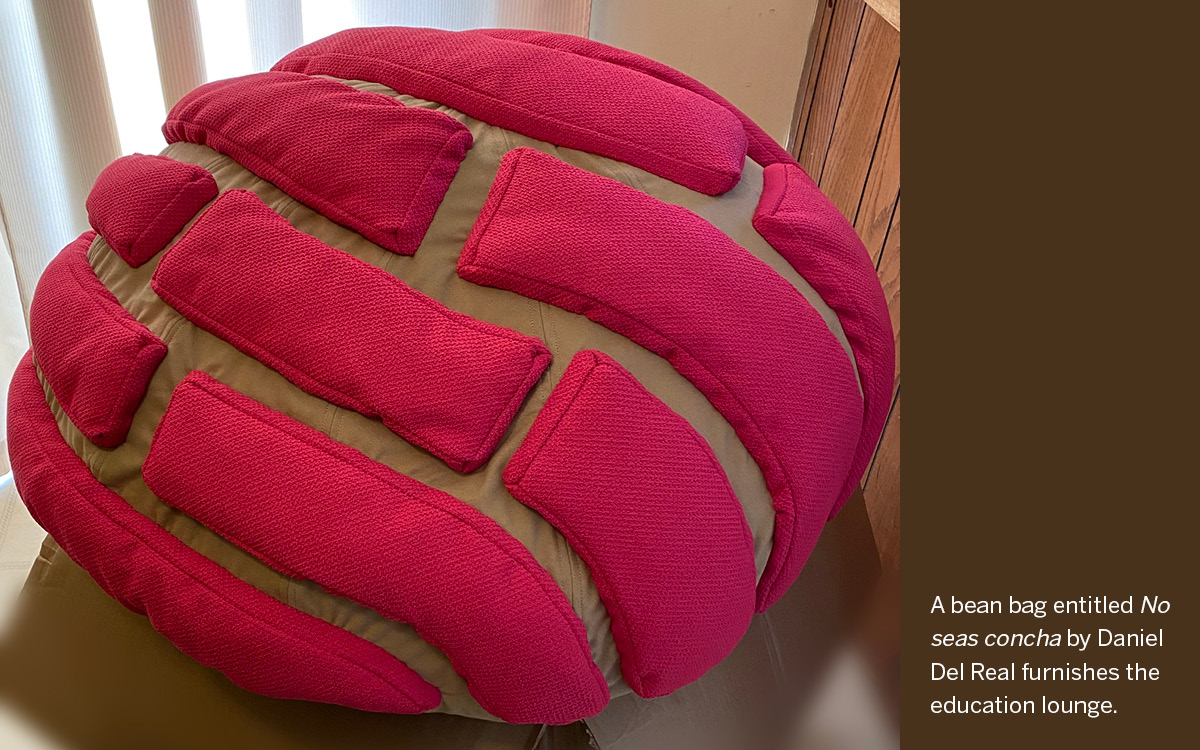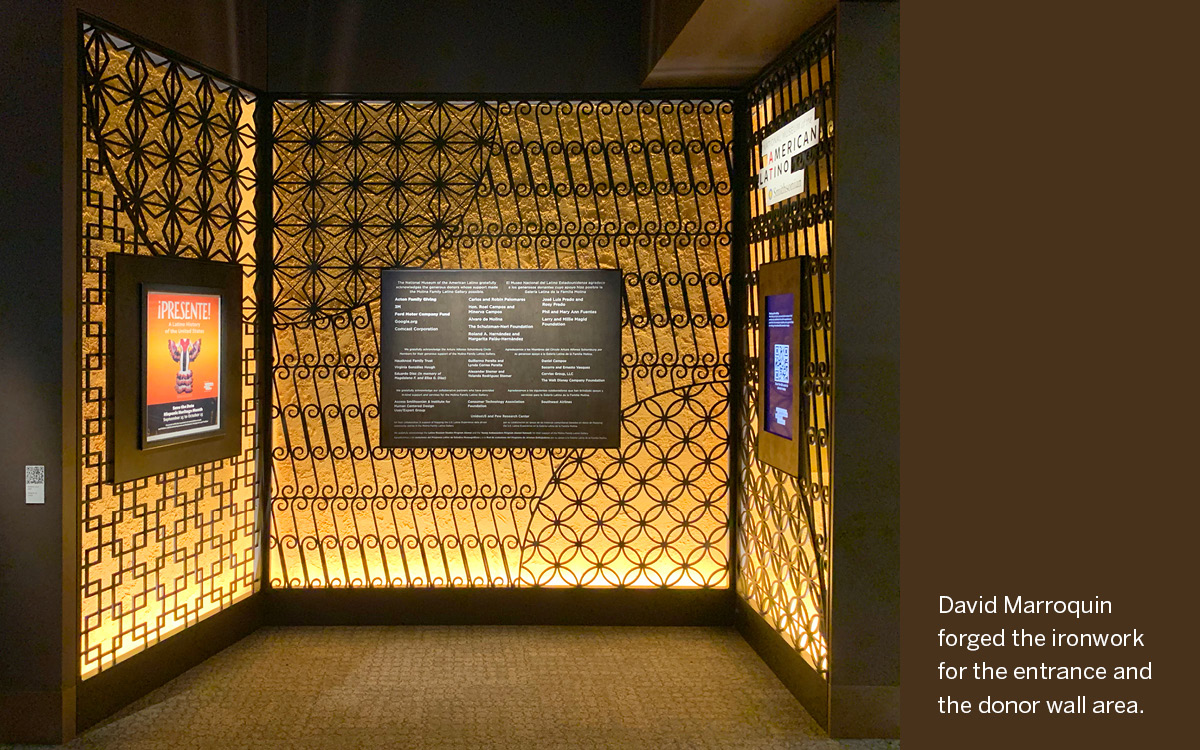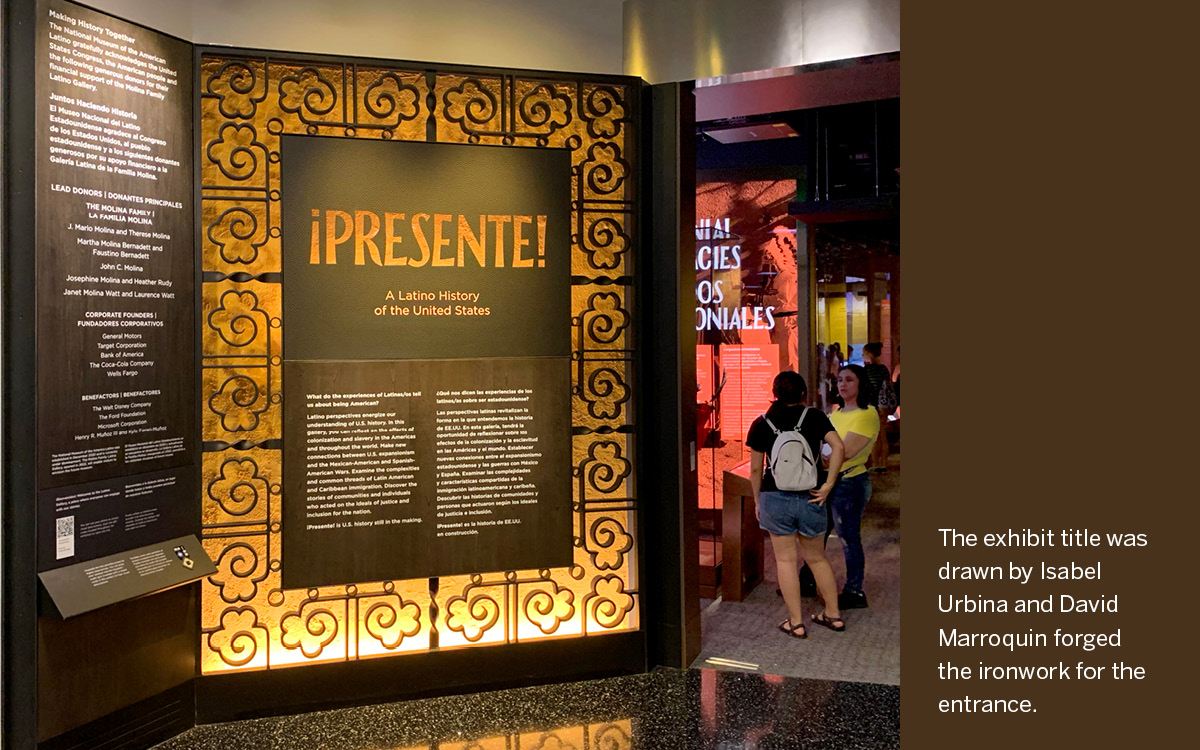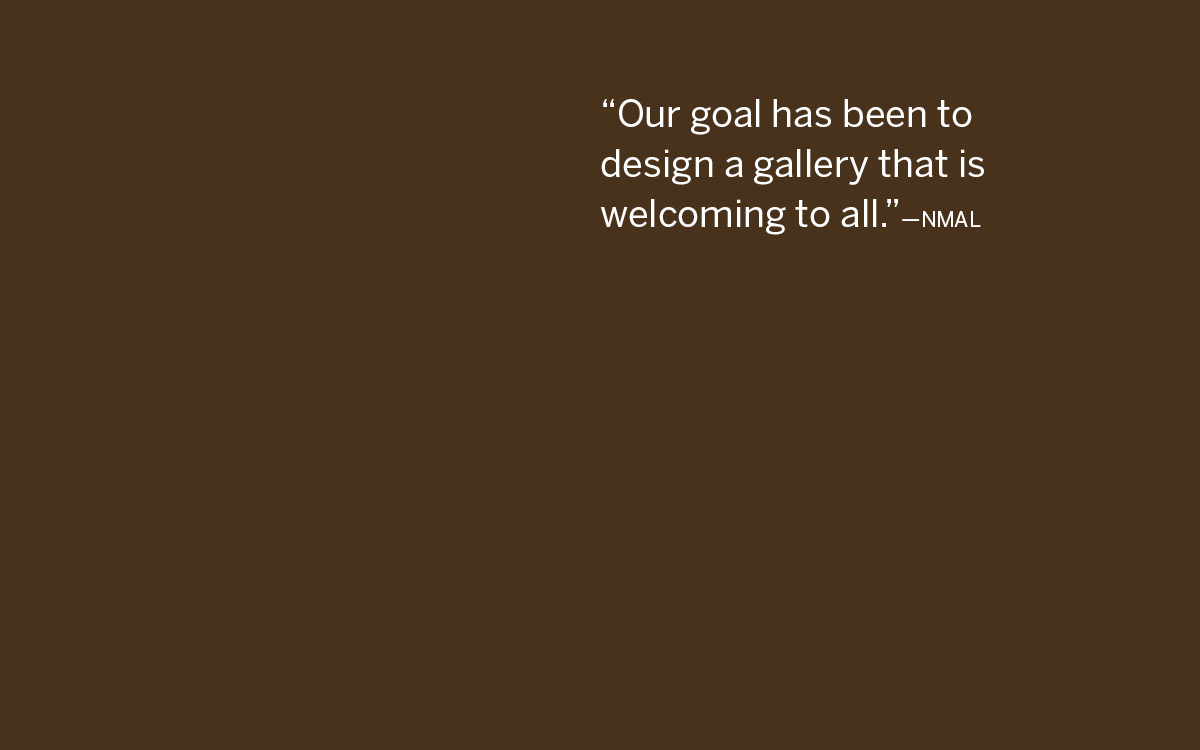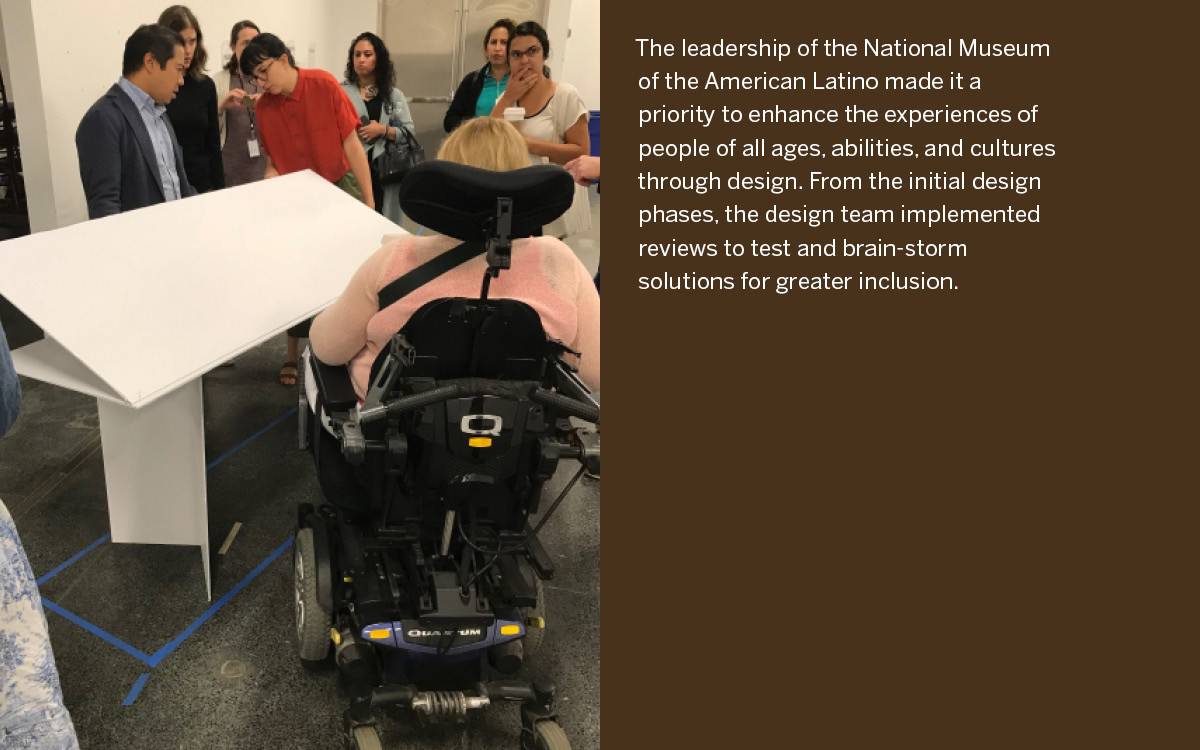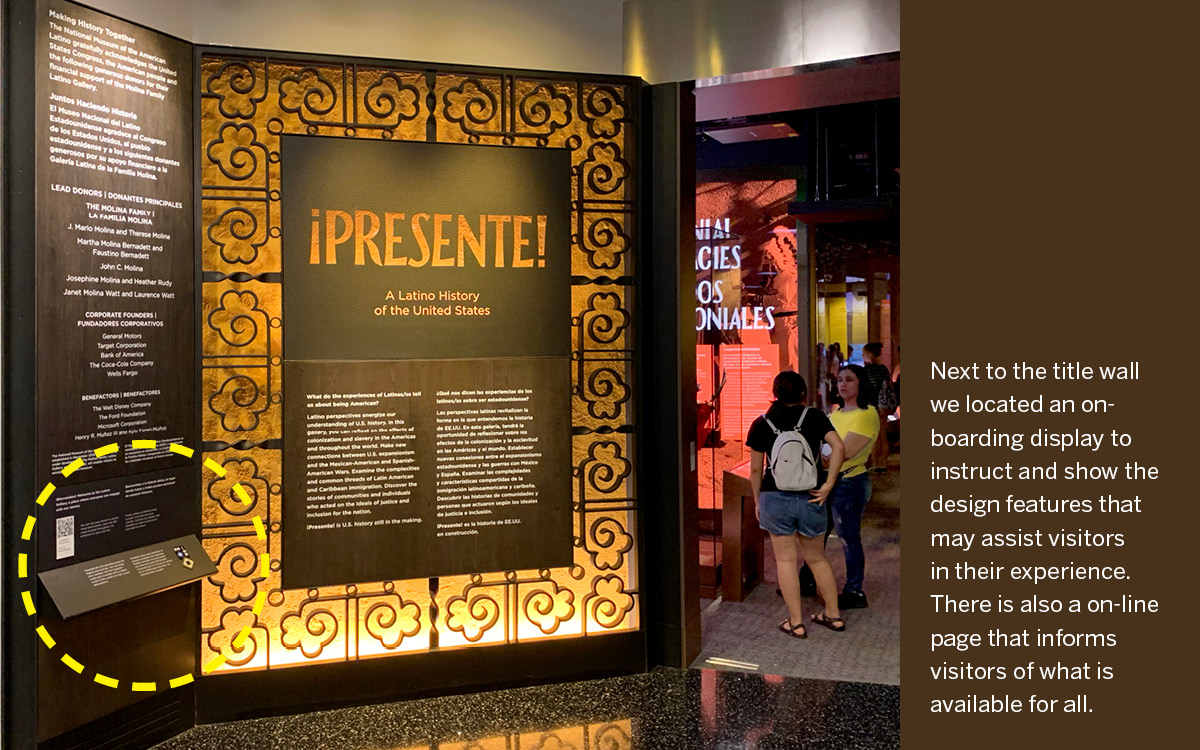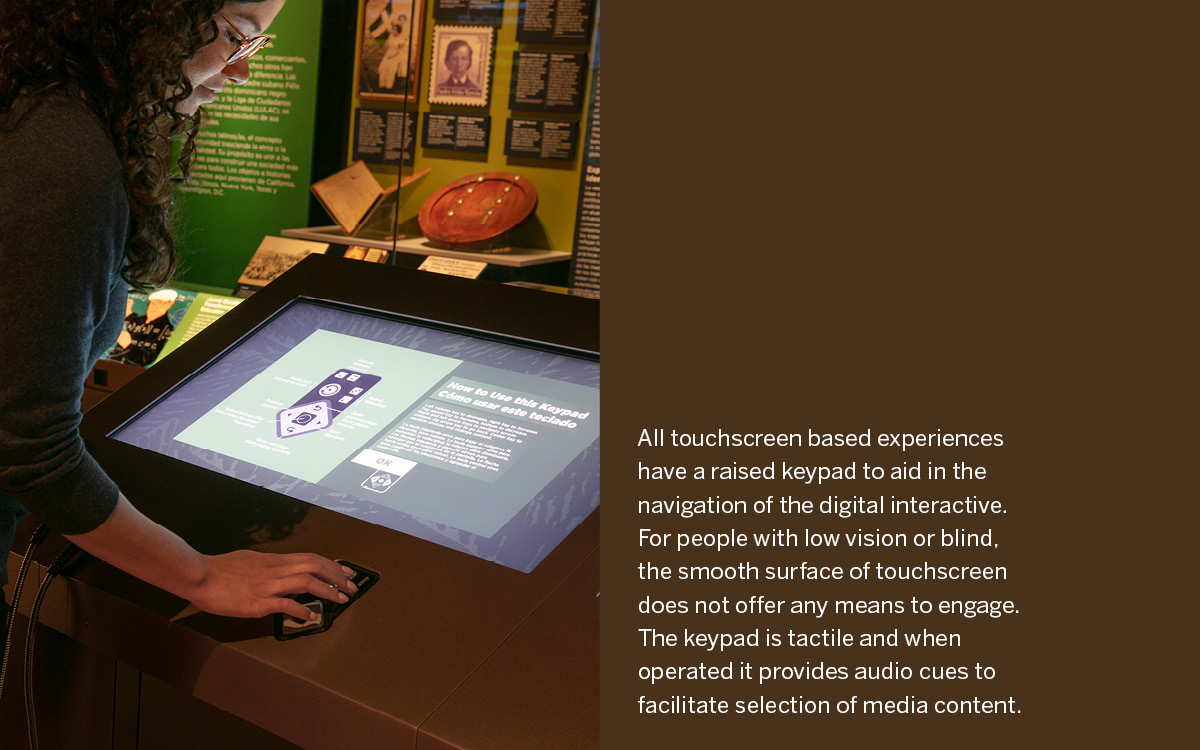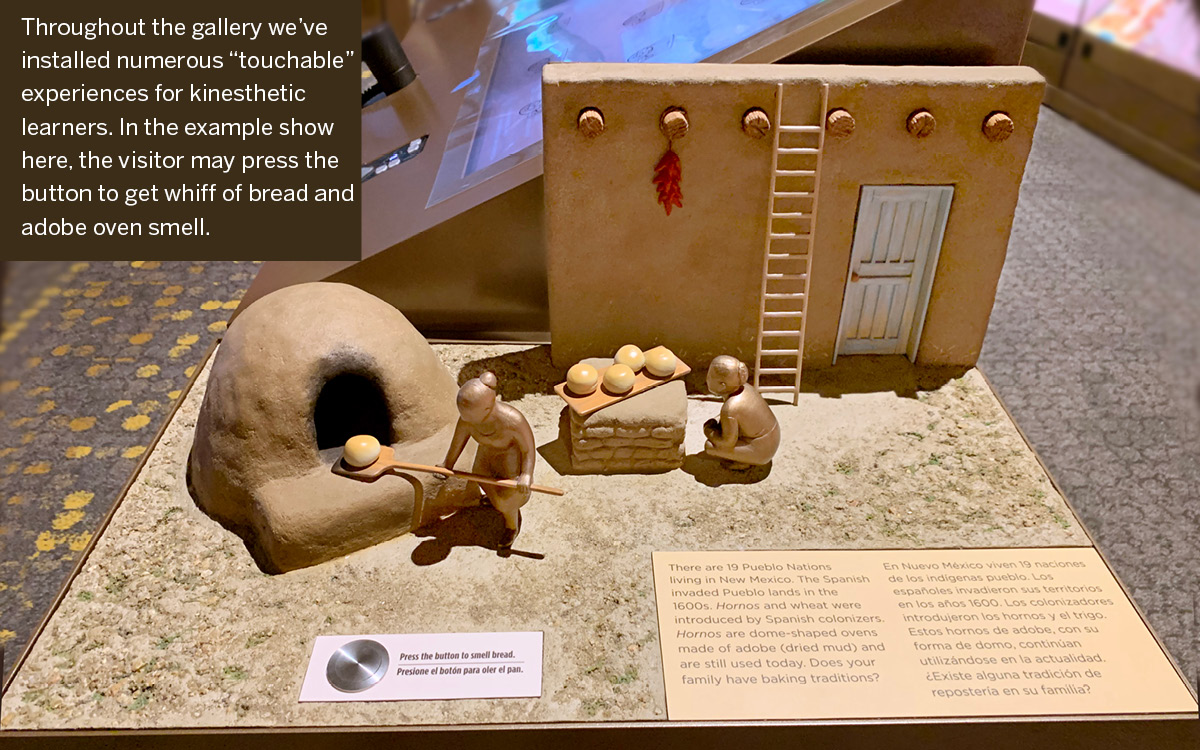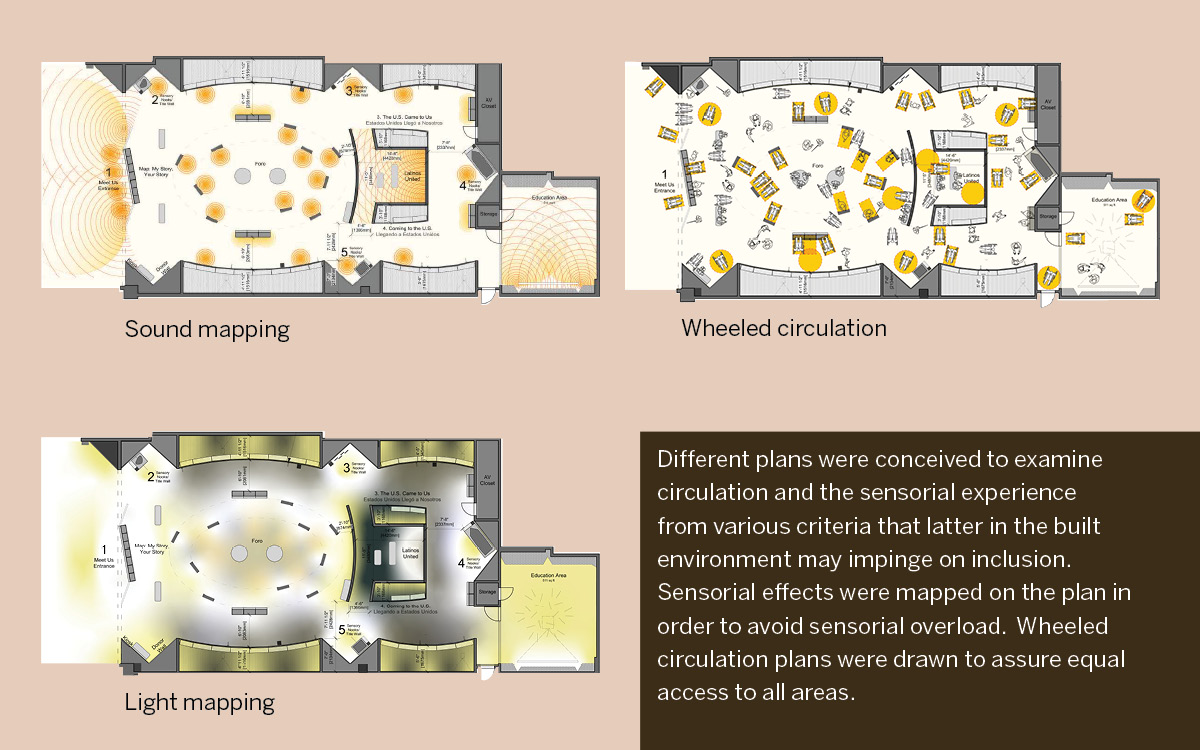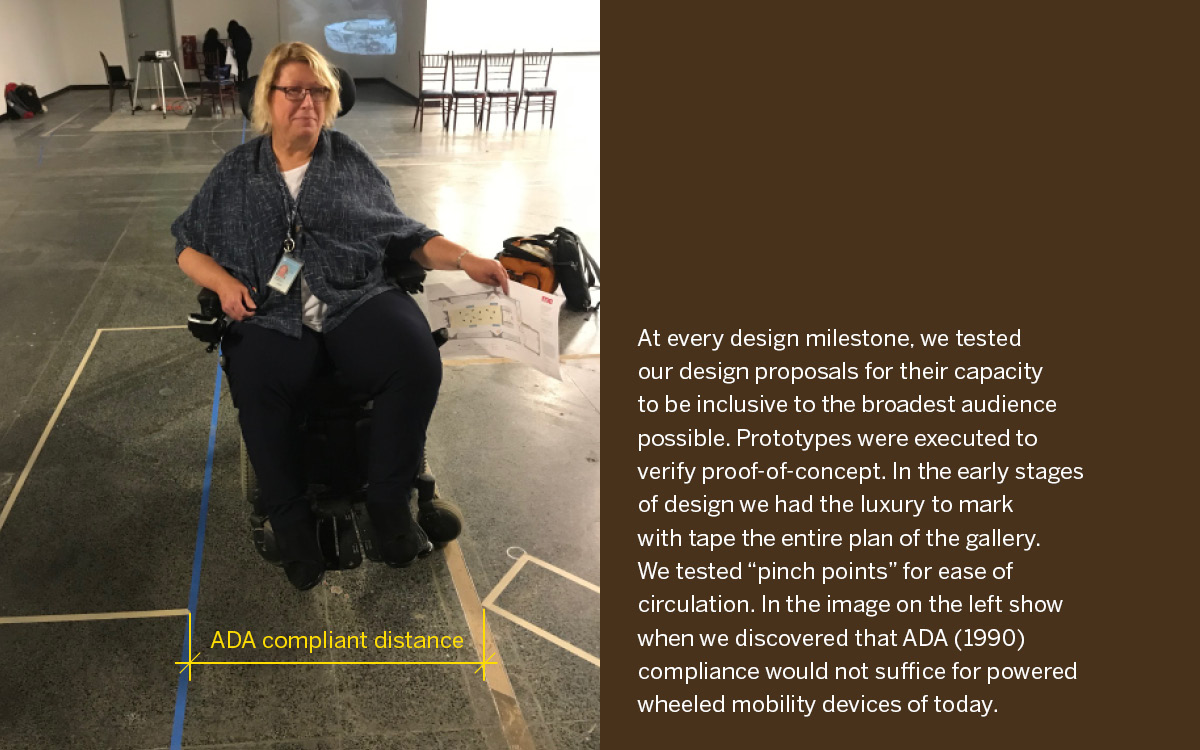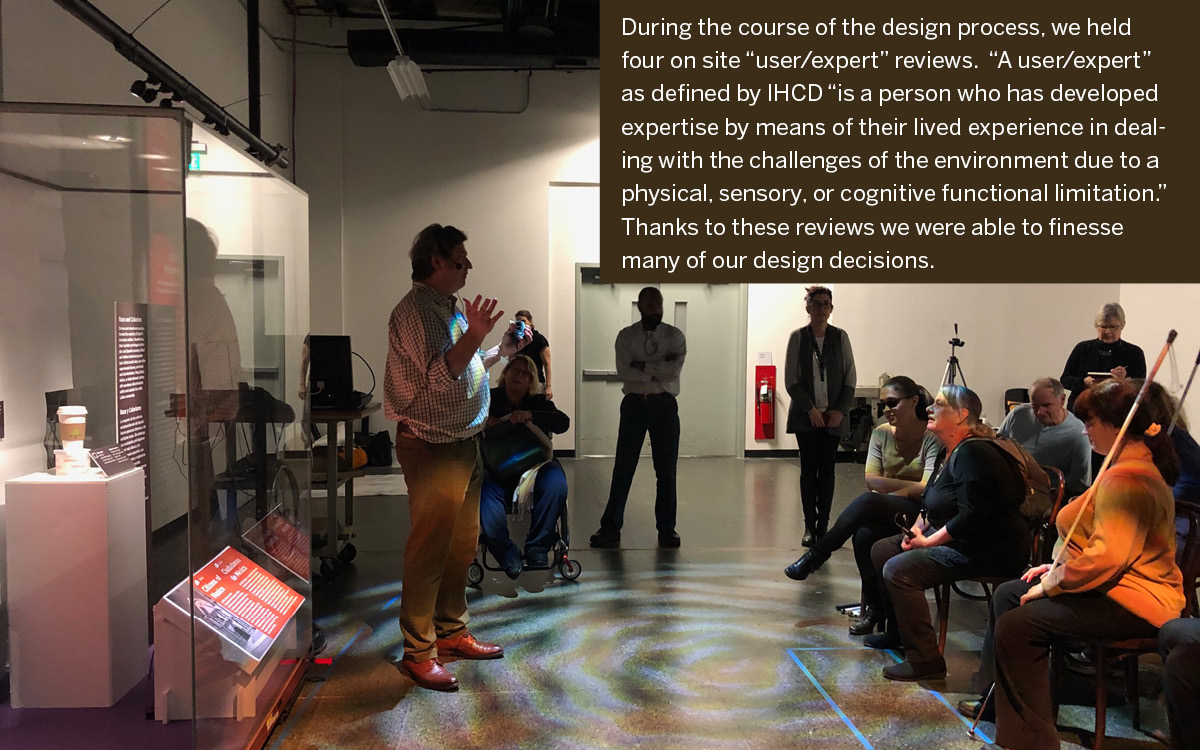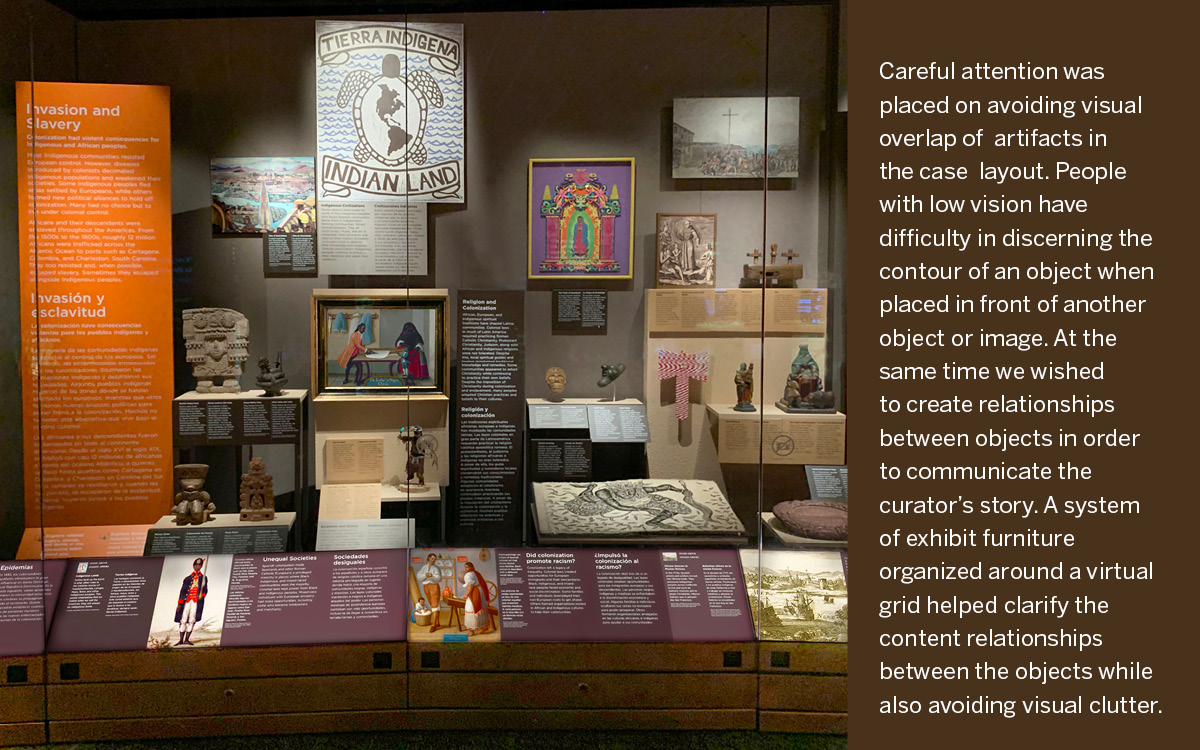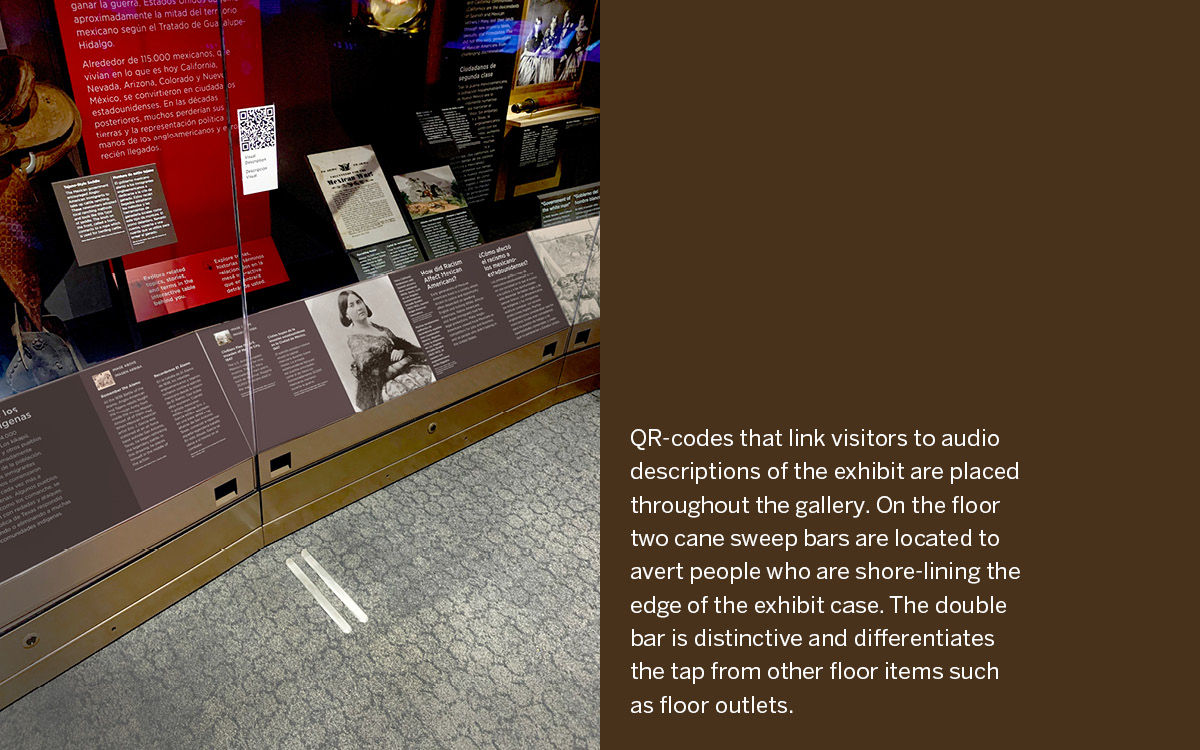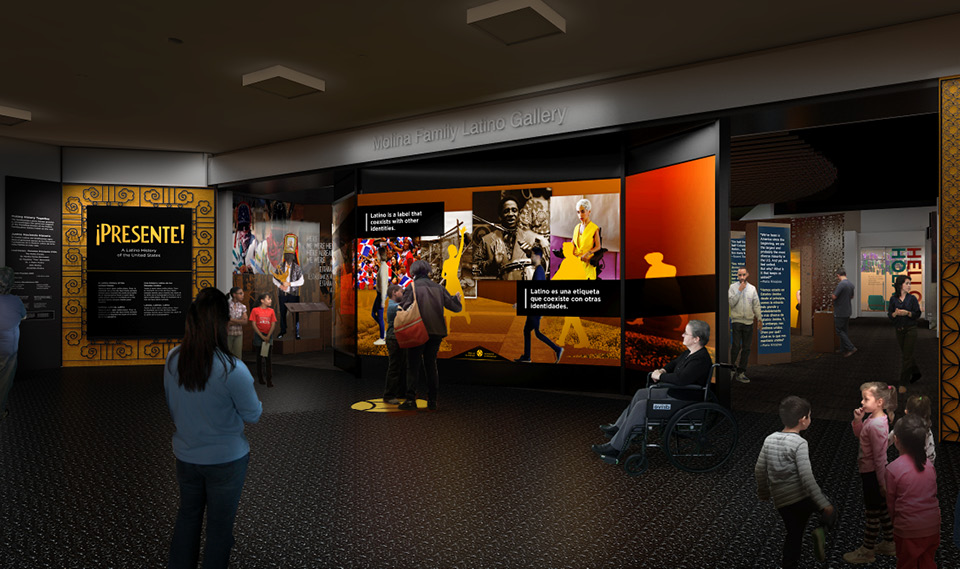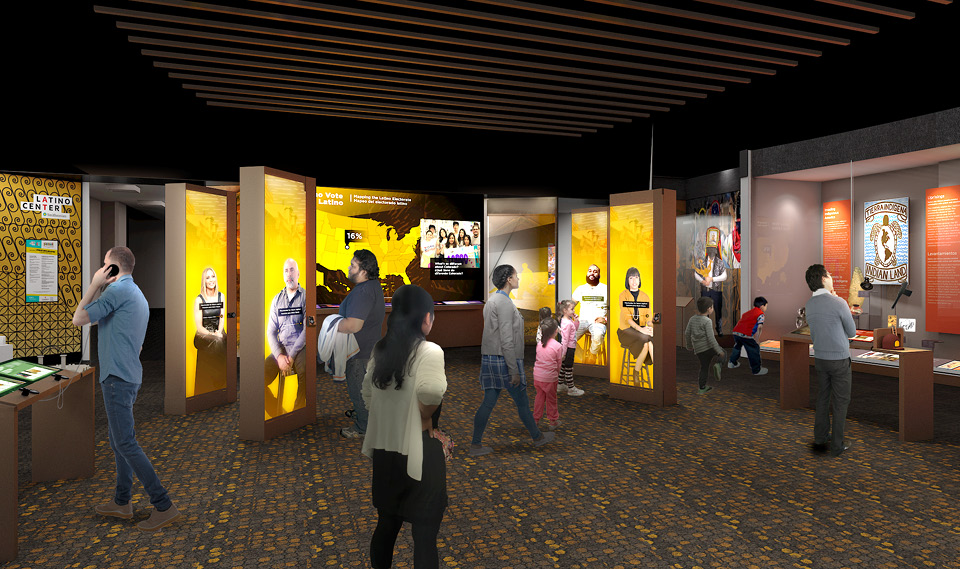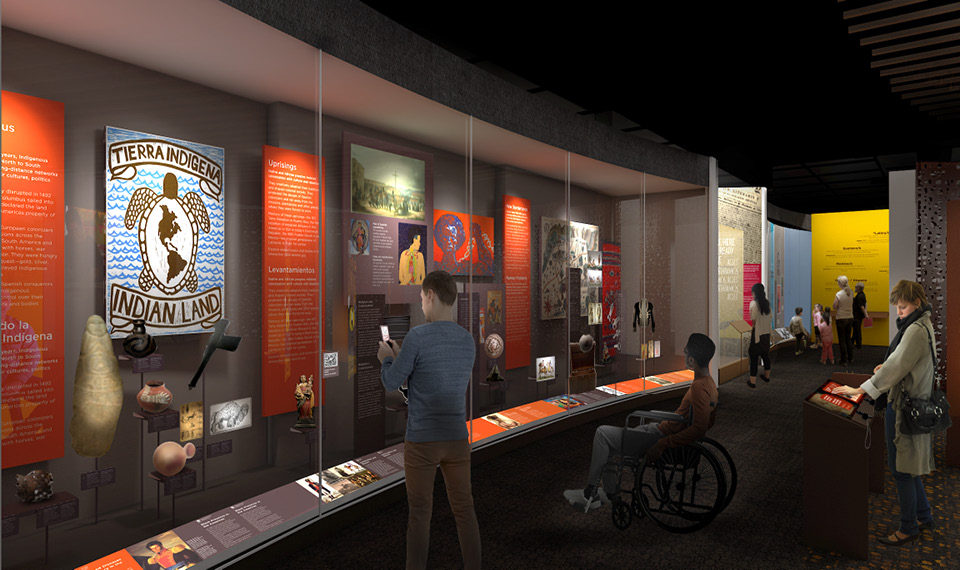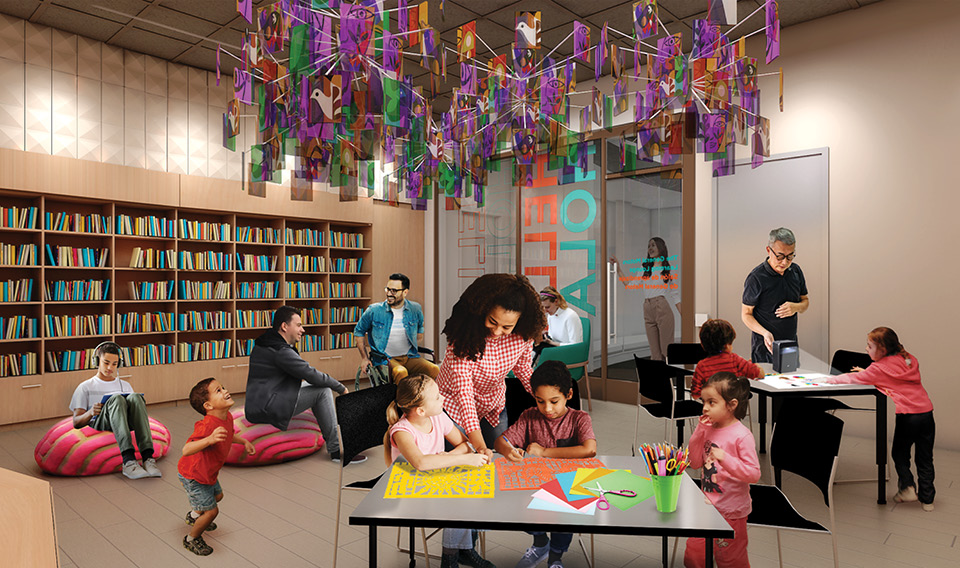The Molina Family Latino Gallery
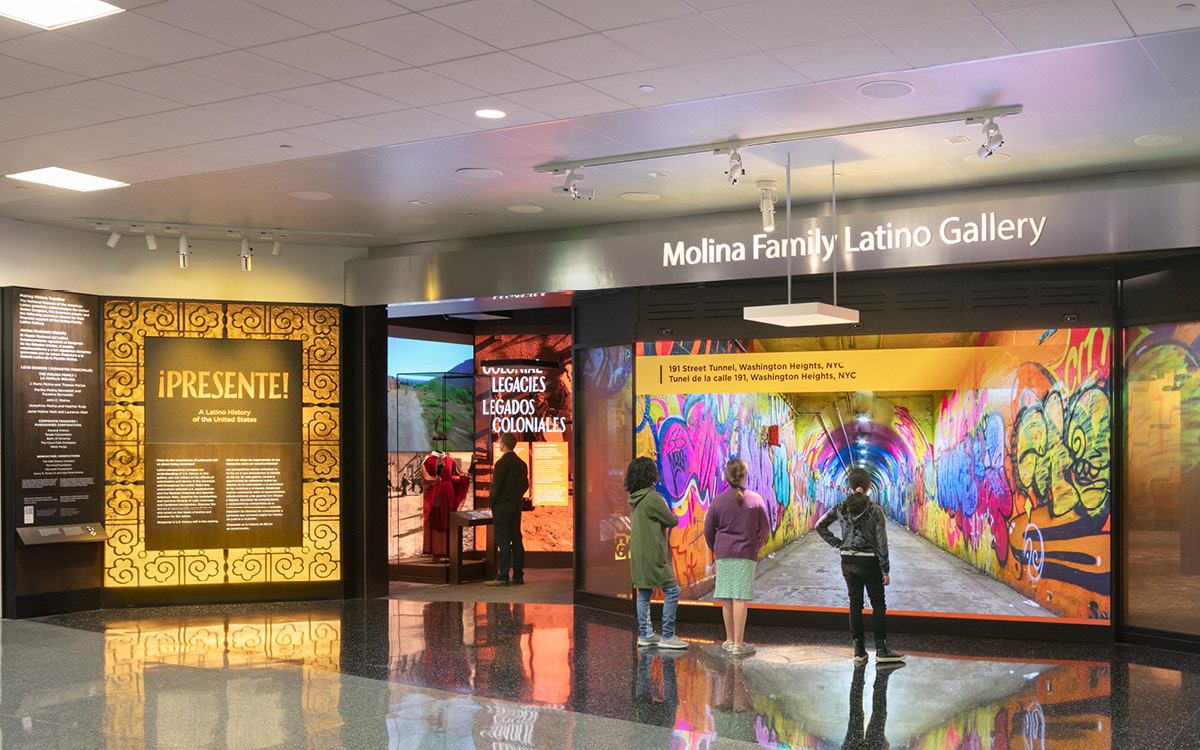
The Molina Family Latino Gallery (MFLG) at the National Museum of American History, is the first Smithsonian gallery dedicated to Latino history and culture. The gallery’s goal is to emphatically claim that “Latino history is American history.” With this in mind, we opened the design process to a transdisciplinary approach that allowed Latinx artists, craftspeople, and other designers to participate as cultural stakeholders of the project. This permitted a wide range of Latinx artists from all parts of the United States to express their latindad.
The gallery occupies 4500 sq. ft. of the National Museum of American History, Smithsonian in Washington DC. Thanks to the sponsorship from the Molina family and numerous corporate funders the gallery displays state-of-the-art museum cases and digital interactives. The gallery offers an engaging experience for all visitors, regardless of prior knowledge of Latinx history and culture. We took extra measures to design the exhibit elements for the inclusion of the broadest possible audience.
Client: Smithsonian Latino Center
Black Box Architect Partner: Quinn Evans
Black Box Architects: Abby Tourtellotte, Carolina Uechi, Alyson Steele (Partner)
Project Director: Eduardo Diaz
Curator: Ranald Woodaman
Assistant Curator: Lola Ramirez
Museum Environments team
Lead Designer: Mariano Desmarás
Designer and Project Manager: Andrés Clerici
Architect: Melinda Zoephel
Bilingual Graphic Design Production: Alejandro Kiesel
Gallery Slide-show
The “big idea” driving the design was a “museum within a museum.” The gallery is located in the National Museum of American History Smithsonian. It was not to be just another exhibit, instead it had to carry the power of place. It was imperative for the gallery to bestow an authorial and institutional message making it clear that the content and experience was created by a community of Latinx stakeholders.
Co-creation Gallery
The following images are the works of the Latinx artists and artisans that worked in a portion of the gallery design and execution. This process stems from a creative ambition to invite a broad scope of cultural stakeholders to participate in the creation of the gallery. In this manner, we are able to expand the creative voice of the gallery to include the greater diversity of the Latinx community in the United States. The artists presented here are from all parts of the United States and from different Latin American heritage.
Inclusive Design Gallery
The following images in the slide-show show the process and solutions we developed to create a more inclusive gallery experience. The work shown here results from a collaborative design process with various experts, consultants, and stakeholders. We are especially grateful to the Institute of Human Centered Design (IHCD) and Access Smithsonian.
Design Process
From the beginning of the project, it was understood that one could not rely on one's own Latinx cultural heritage because it would be fluent in the diversity of the Latinx community in the United States. Such an approach would centrally locate our design culture and we deemed this to be akin to the encyclopedic museum model. Such an approach is conceptually flawed for this gallery because it reverts to the colonial origins of museums. A better alternative was to use a transdisciplinary design process to invite the participation of diverse cultural stakeholders. This launched a very joyful process of summoning artisans, artists, and media producers. To name a few, we engaged Isabel Urbina (NY) for the hand-lettering of all titles. David Marroquin (LA) helped design and forge the ironwork for the entrance and donor wall. Rafael Lopez (San Diego) drew icons shown for a; as well as all the portraits used throughout the exhibit graphics. Verónica Castro (TX) produce a ceramic “Arbol de la Vida” (Tree of Life).
During the course of the art commissioning, we also saw the need to examine our material cultural legacy and ask what does it mean for the future? Borrowing the term “Resignification” from the architect David Adjaye we looked to boldly practice our cultural heritage and to use these methods and materials to make new forms for the contemporary context. The goal of “Resignification” is to locate our heritage in forward-looking art direction process.
Concurrently, we developed a “big idea” behind the design of the plan to create a “museum within a museum.” The gallery was not to be just an exhibit, instead, it had to carry the power of place. It was imperative for the gallery to bestow an authorial and institutional message. All stakeholders wanted it to be clear that the gallery is sponsored, curated, managed, and created by Latinx professionals. Like a museum, the gallery provides a permanent exhibit infrastructure to support rotating exhibits. There are four areas: “Meet Us” a digital welcome at the entrance, “Presente” a changing exhibit with immersive experiences, Education lounge for learning workshops, “Somos Theater” a short film screening room. Naturally, all text and media are bilingual.
Accessibility to all gallery experiences was a central goal for the gallery. The leadership of Eduardo Diaz the director of the NMAL understood inclusion in the broadest of terms. For that purpose, consultants from Institute for Human-Centered Design participated from the very beginning of the design process. They provided the design team with the luxury of their expertise. In addition, we held four user/expert reviews of design mock-ups in progressive stages of design. “A user/expert” as defined by IHCD “is a person who has developed expertise by means of their lived experience in dealing with the challenges of the environment due to a physical, sensory, or cognitive functional
limitation.” With every user/expert review, we finessed our design decisions. For example, we applied acoustical absorbing materials throughout the gallery. The result is noticeable “tight” acoustics that abates echo and helps people with hearing impairment. We installed cane sweep cues along the “shoreline” of the exhibits to indicate the location of raised QR codes. These may be scanned with their phones that link them to an aural description. Other implementations include: large font size, tactile and olfactory experiences, quiet spaces, seating with armrests, tested wheelchair access to everywhere, careful placement of artifacts to allow for clear viewing, and more. The most notable difference as a designer was the thoroughness of the process. It made a huge difference to examine issues at the beginning of the design process than trying to resolve them at a later stage. The result does not appeal to the camera yet produces an innovative design methodology.
Spatial Organization
The Latino Gallery’s name marks the entrance across the threshold, and Meet Us, a multimedia faceted wall, provides a dynamic experience to entice and welcome visitors to the gallery. Once inside, visitors find three distinct experiential spaces: 1) the historical exhibition areas, 2) the contemporary Foro, or forum, and 3) the Learning Lounge.
Along the gallery’s perimeter, twelve-foot-high vitrines showcase thematic arrangements of graphics, historical artifacts and contemporary images from the Smithsonian, other museums, and private lenders. Each exhibition section is introduced by a free-standing object displayed in a nook that creates accessible, multi-sensory experiences. Visitors seeking a deeper dive into the ideas and stories displayed in the vitrines can interact with nearby digital tables that feature animated maps, timelines, biographies, and sensorial interactives.
The space at the center of the gallery has been dubbed the Foro (Forum) for its plaza-like design, which lends itself to communal interactions between individuals and small groups. Eight interactive digital storytellers are situated throughout the Foro to recount diverse Latino stories that dialogue with historical content in the cases and demographic information. The Foro is bookended on one side by a large-scale digital map, Mapping the U.S. Latino Experience, and a small theater on the opposite side where different audiovisual programs, such as Somos, will be screened. Mapping the U.S. Latino Experience encourages visitors to explore different aspects of Latino demographics and data, while Somos profiles the diversity of the Latino community.
Past the theater is the Learning Lounge, an informal multipurpose space that can host an array of hands-on educational activities and events related to the gallery’s content for groups of all ages. This unique space can also be used for live streamed educational and public programs that extend the reach of the gallery.
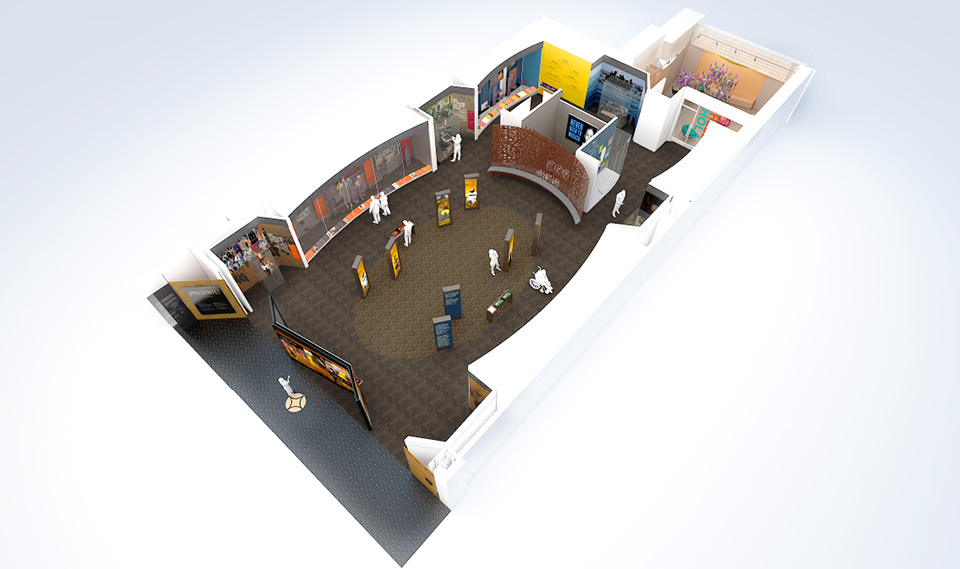
Circulation
Visitors enter the gallery through an entryway between the exhibition title wall and Meet Us. Instead of a single, continuous exhibition path, the flow inside the gallery will be open and unrestricted to encourage visitors to navigate the space freely. This fluid and non-linear circulation will allow visitors to contrast what they see in the cases and the media experiences at the center of the space, between history and contemporary Latino stories. As established in the Smithsonian Guidelines for Accessible Design, circulation will be fully accessible with the required clearance for wheelchair users and will be easy to follow and well lighted.
Recent Press on the opening of the gallery
Category: Portfolio Tags: Latino Exhibit, Latino Heritage, Latinx exhibition
Copyright © 2024 · All Rights Reserved · Museum Environments
· Log in

